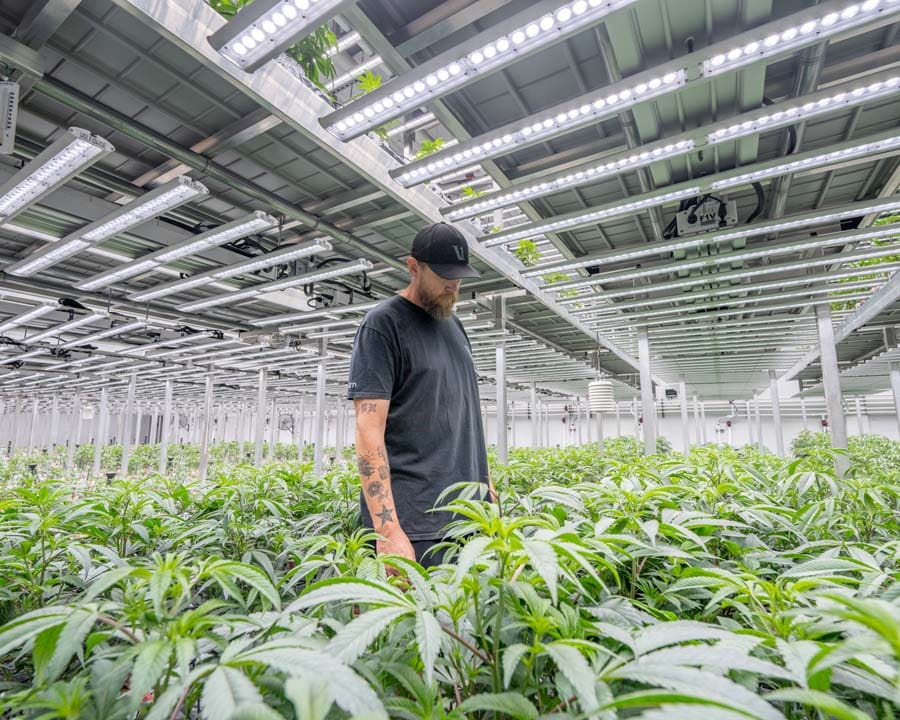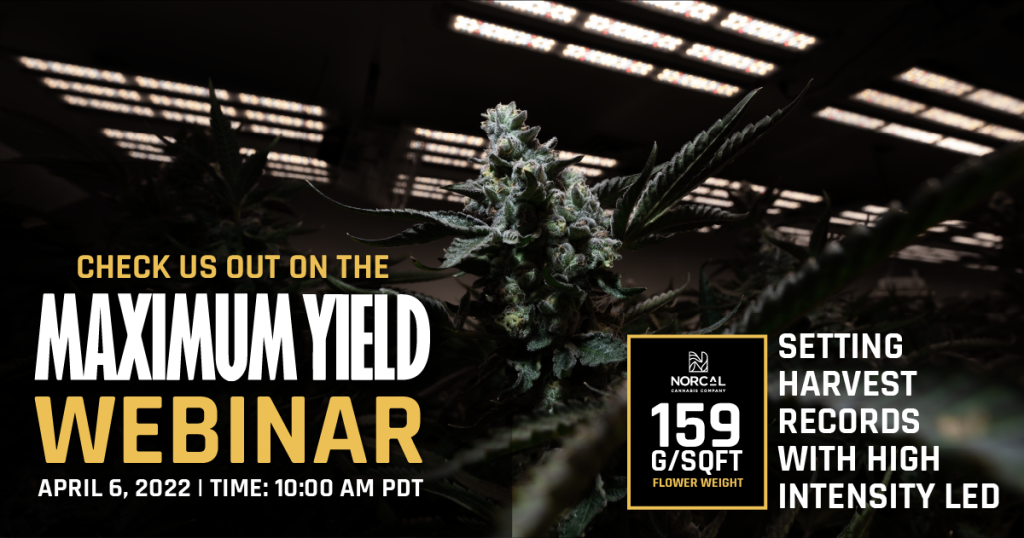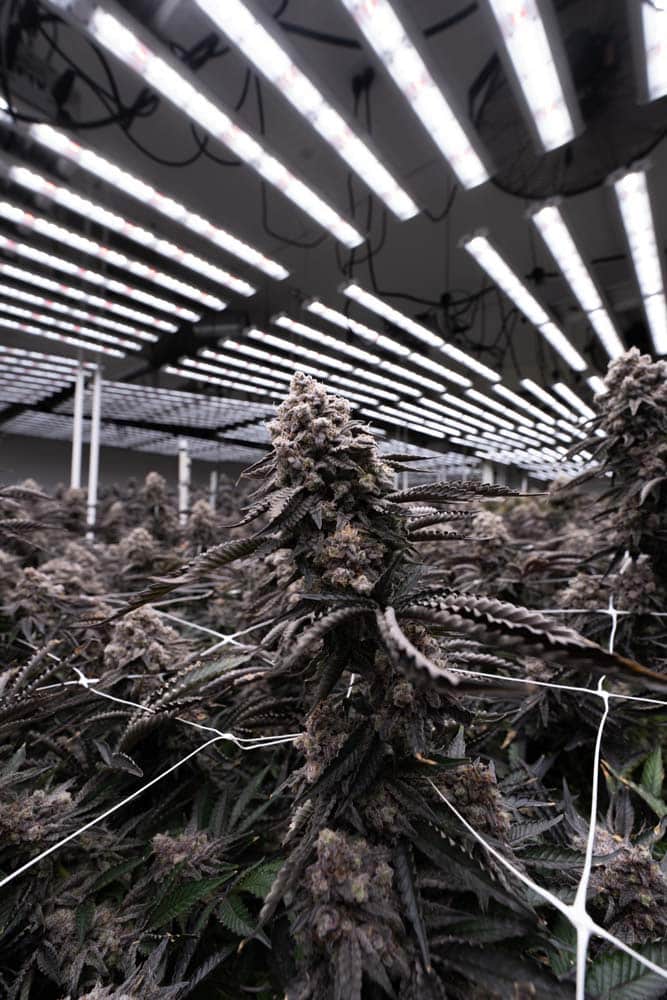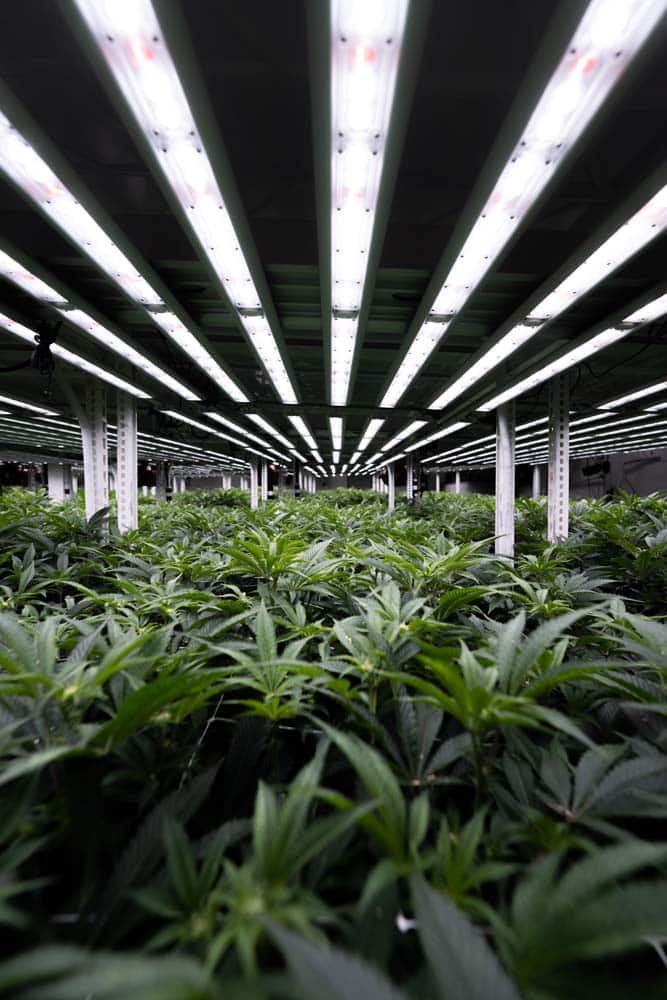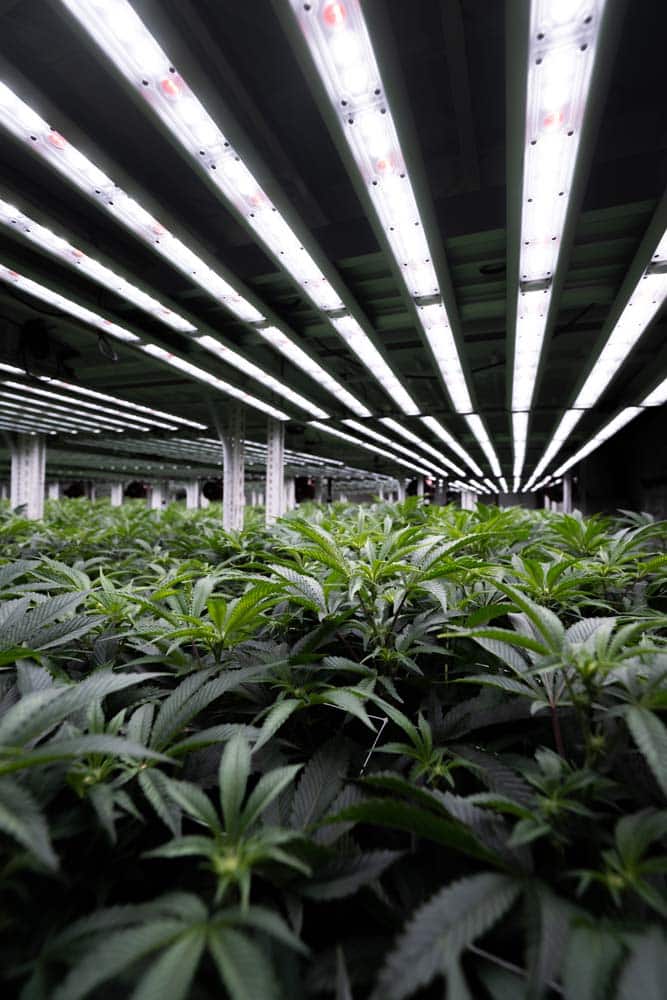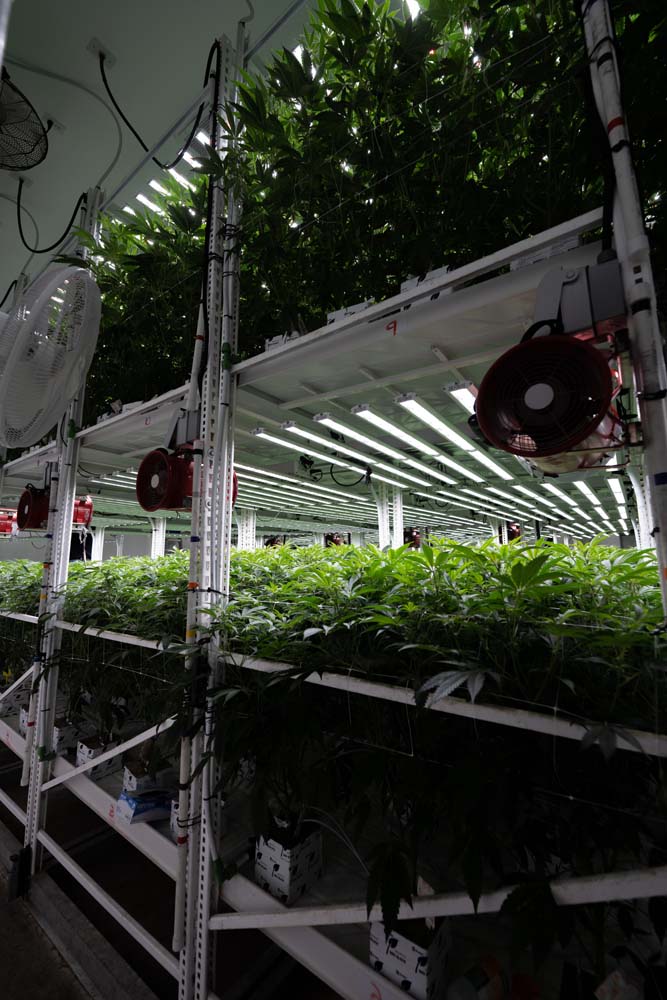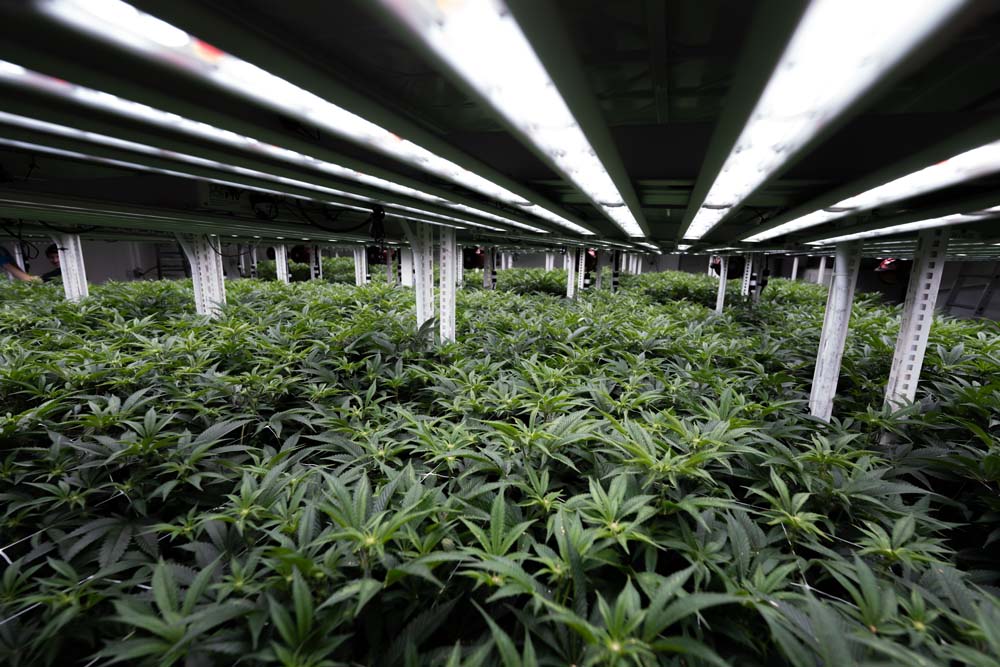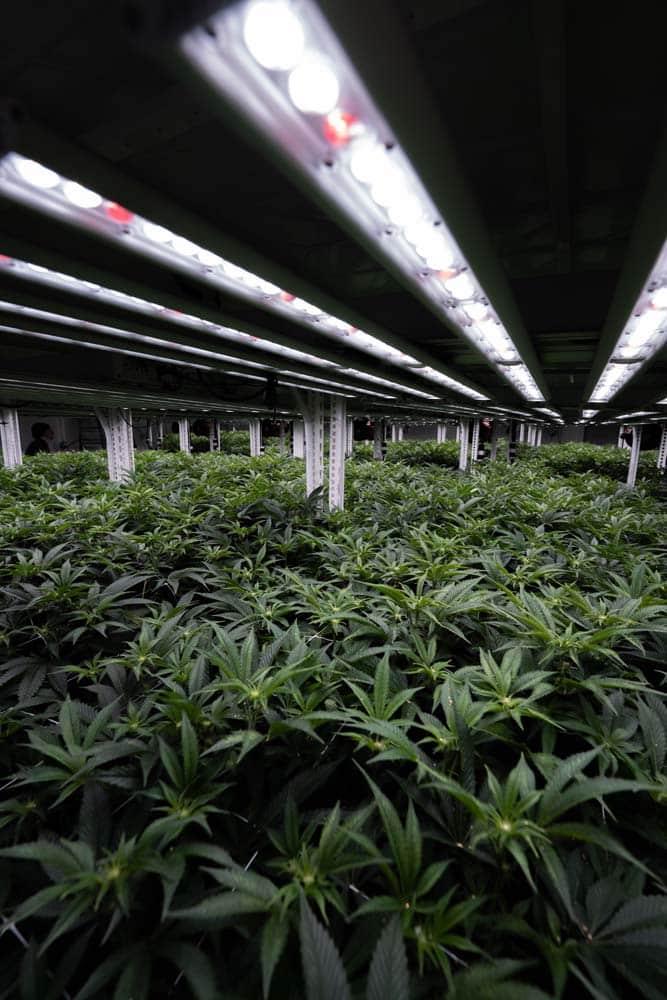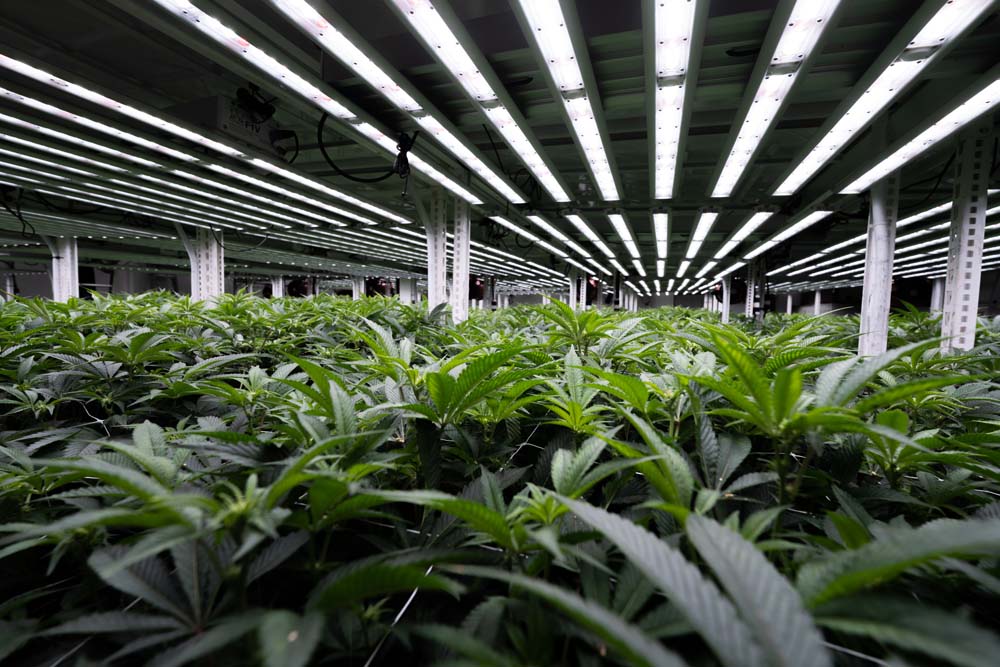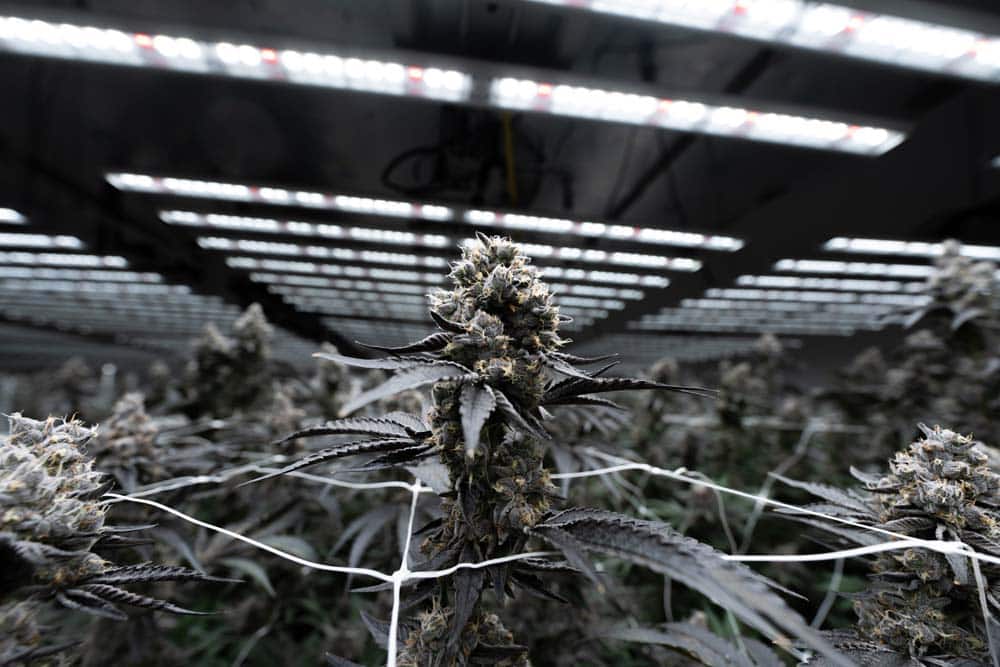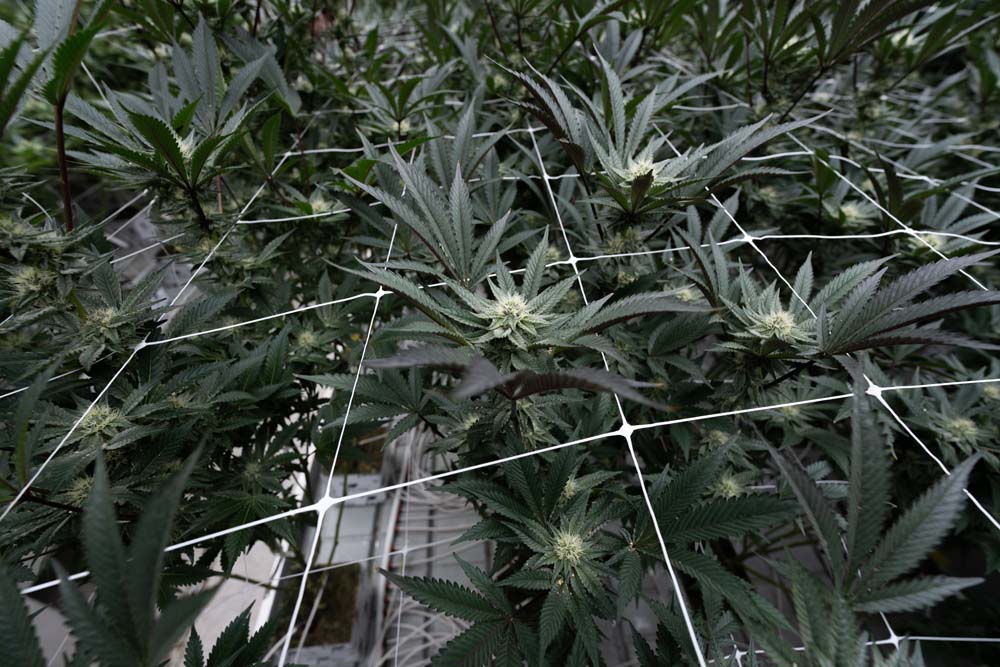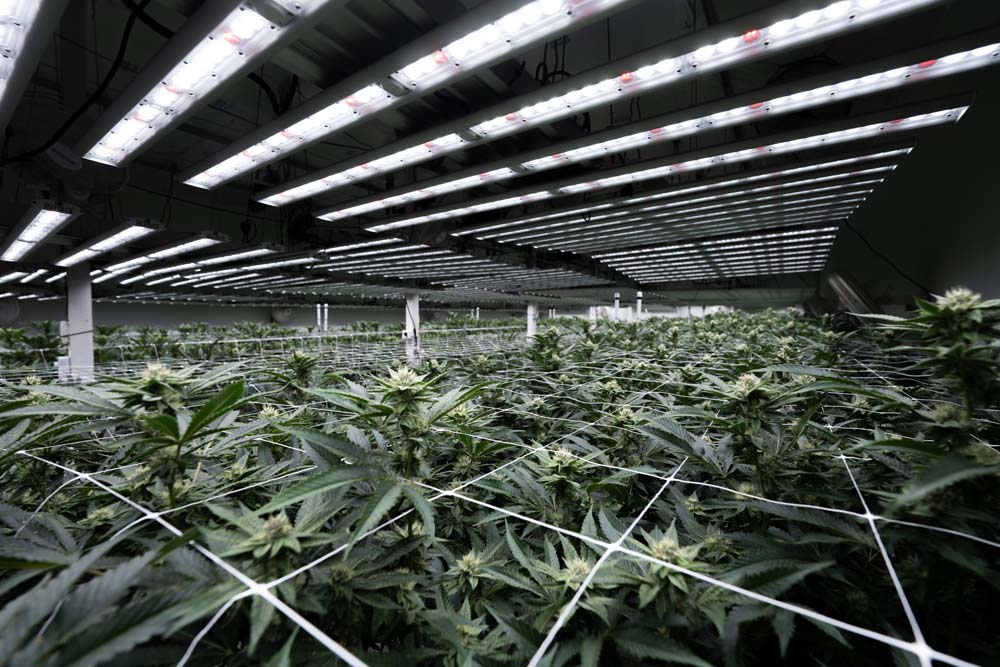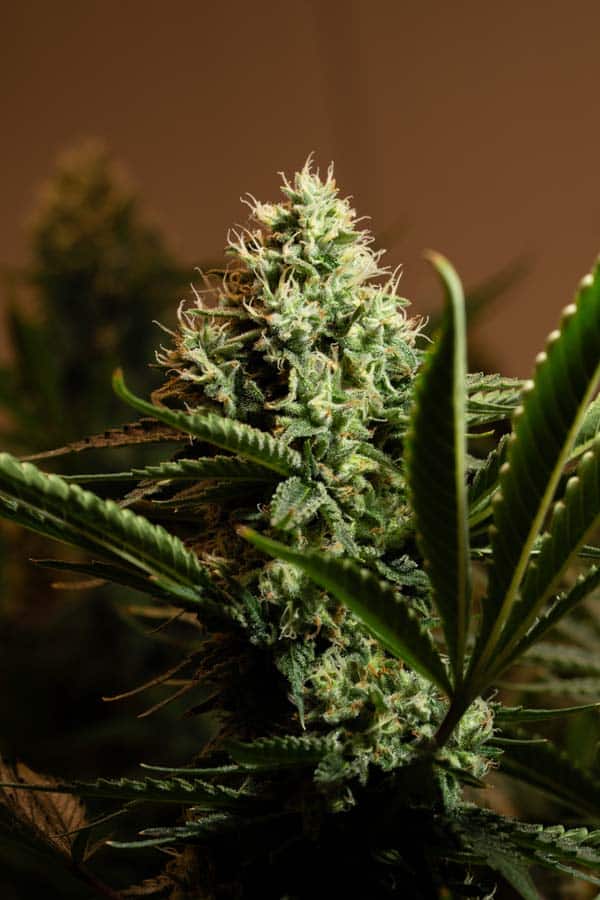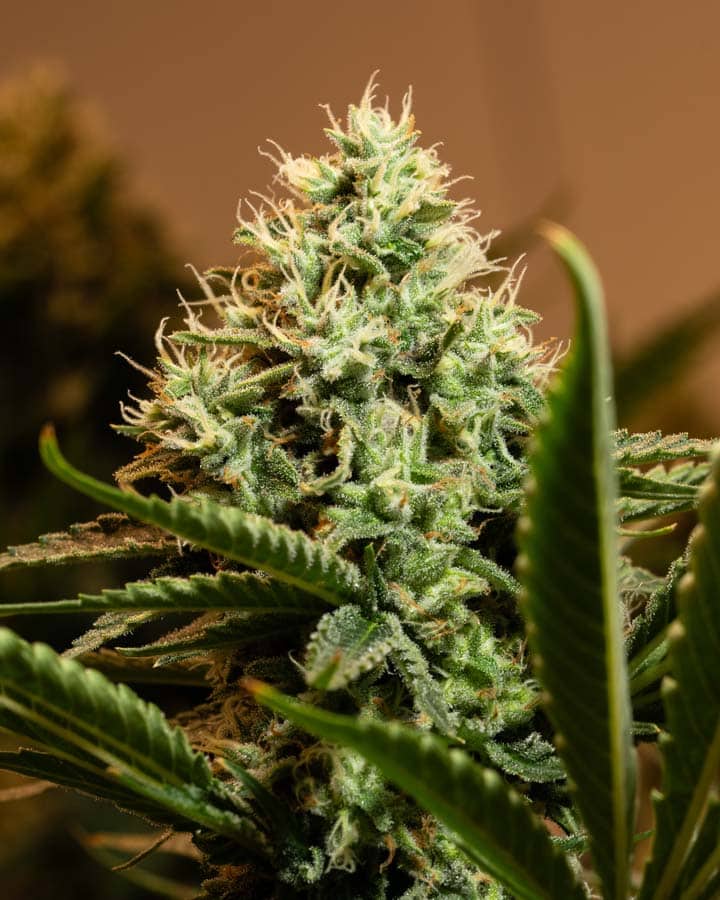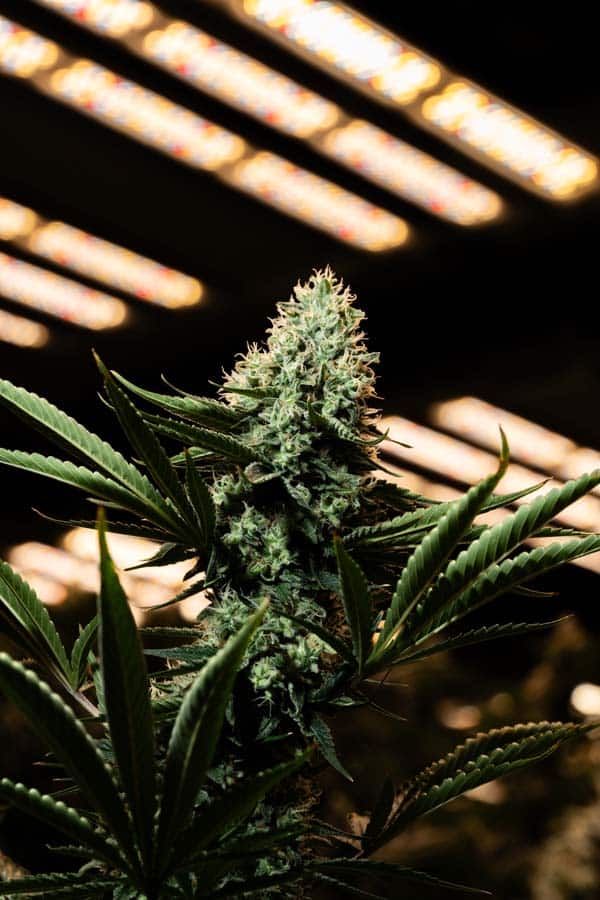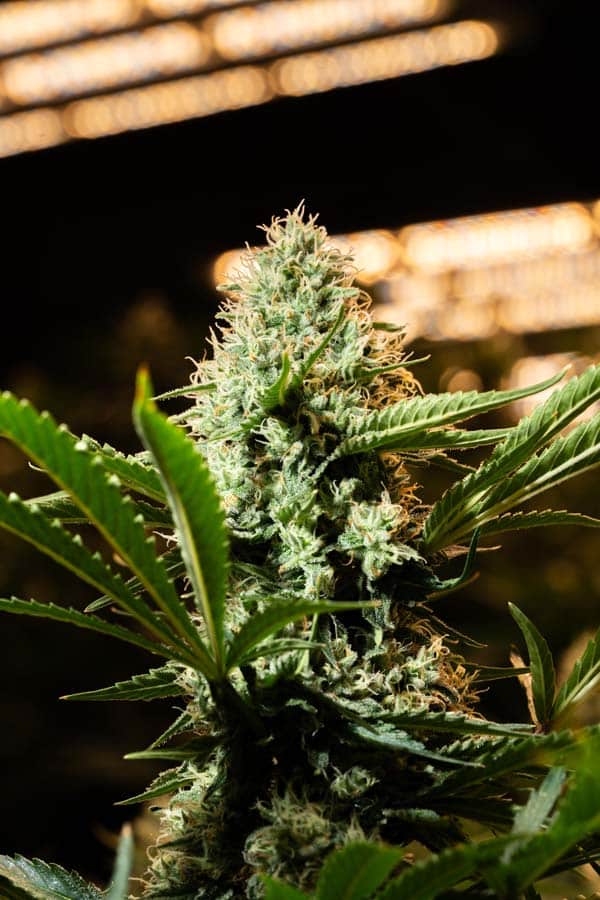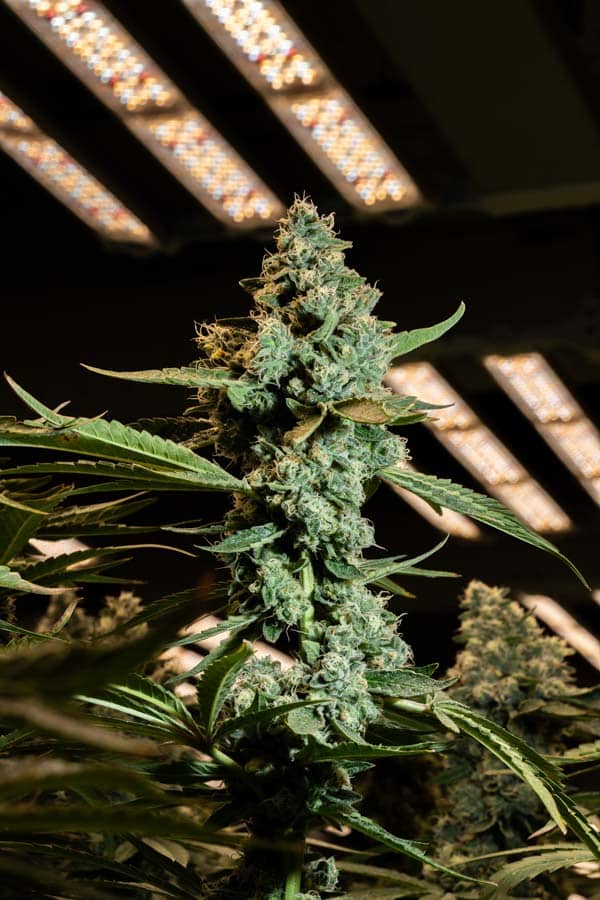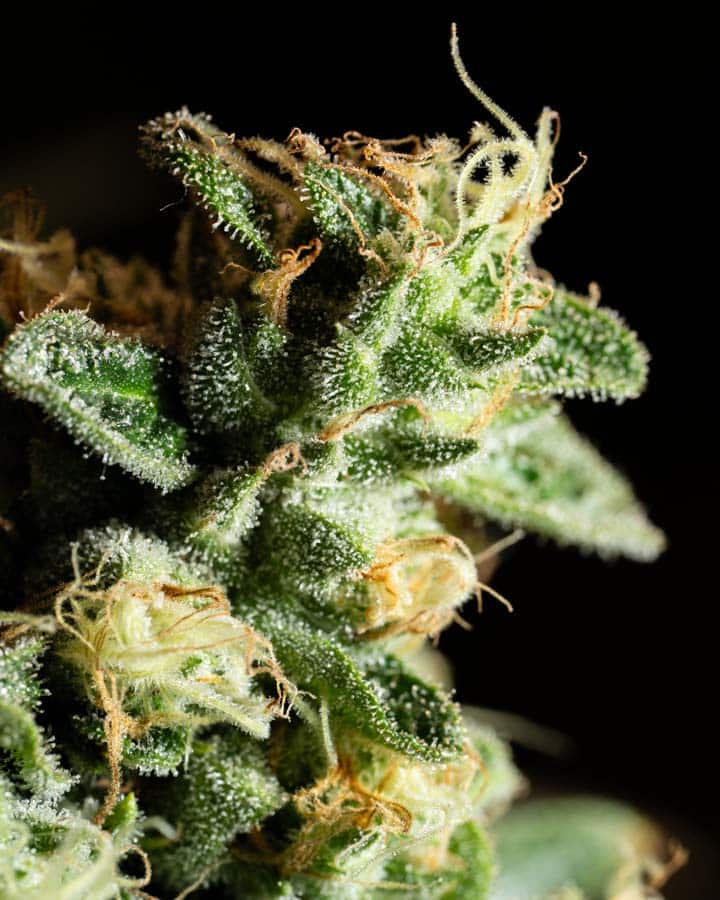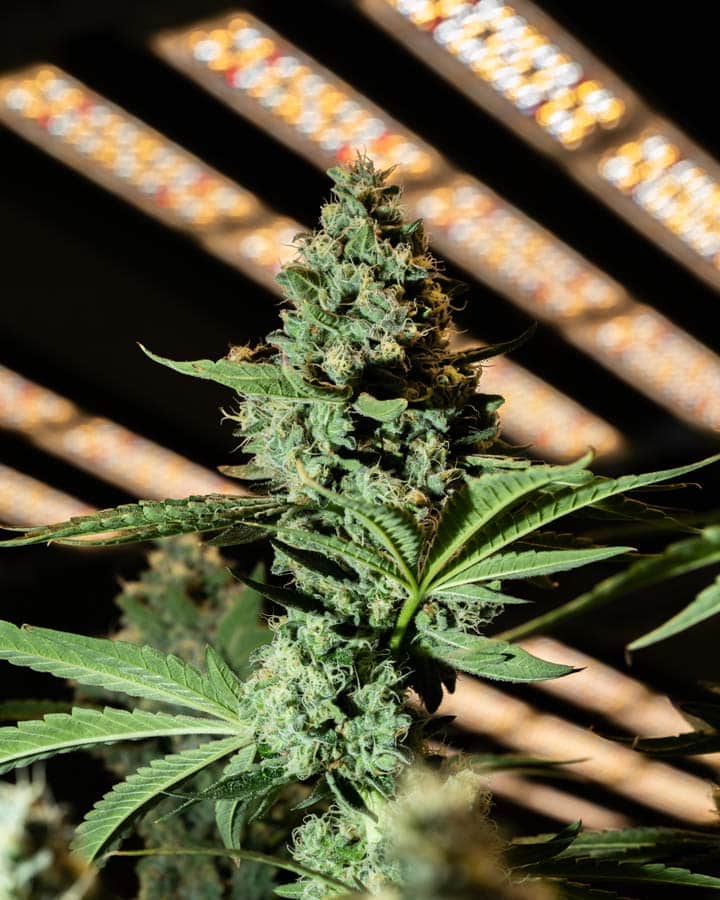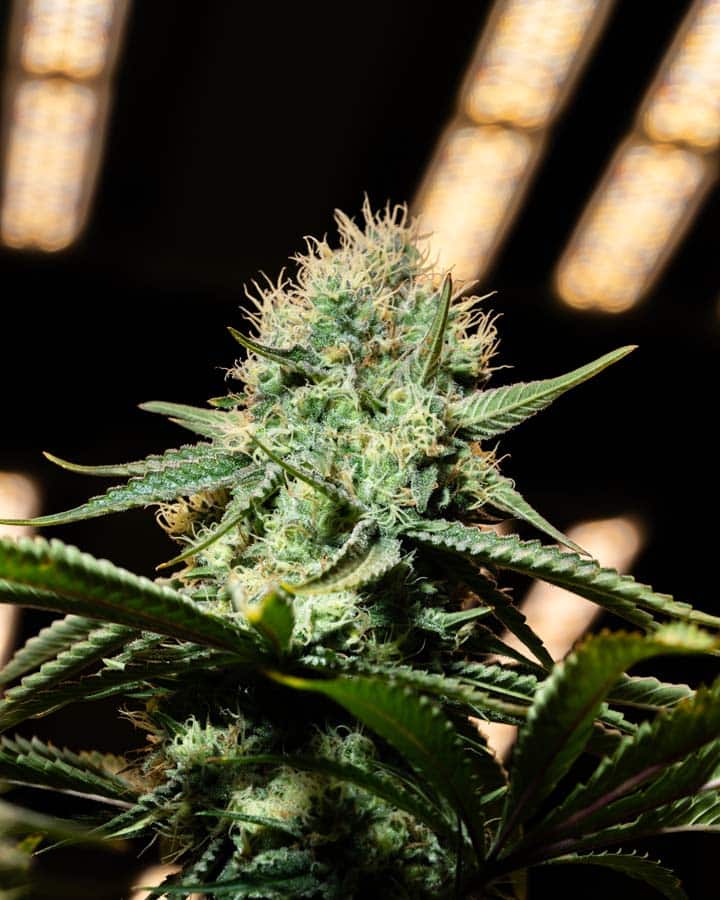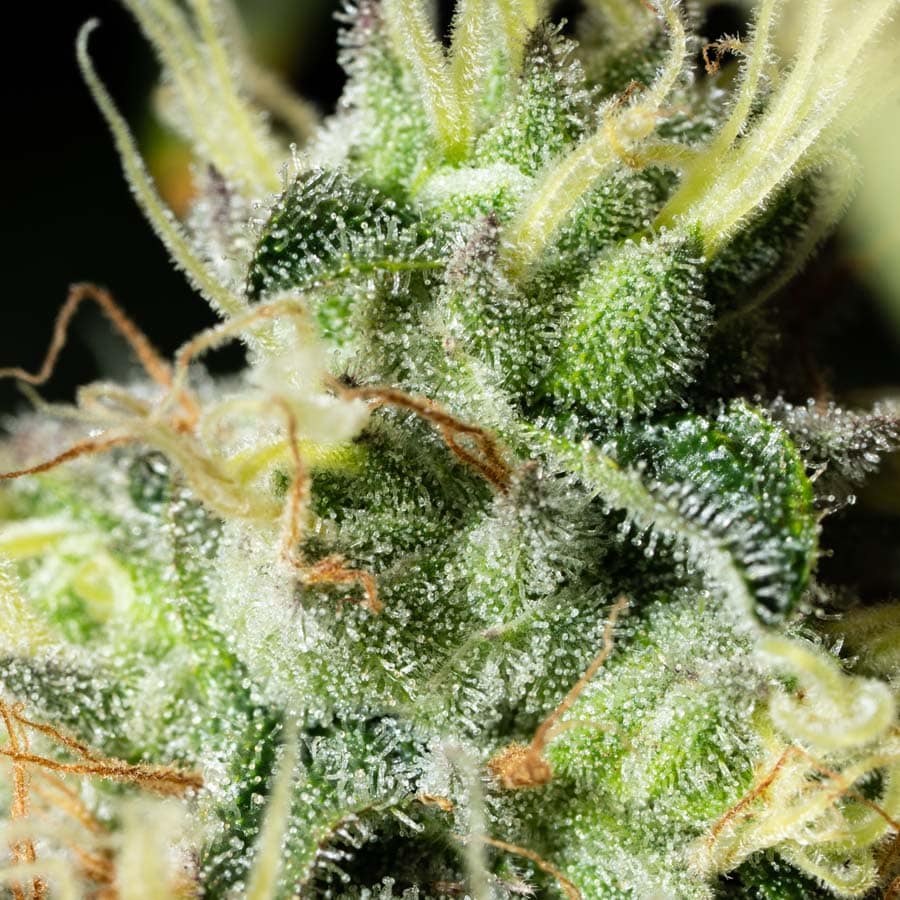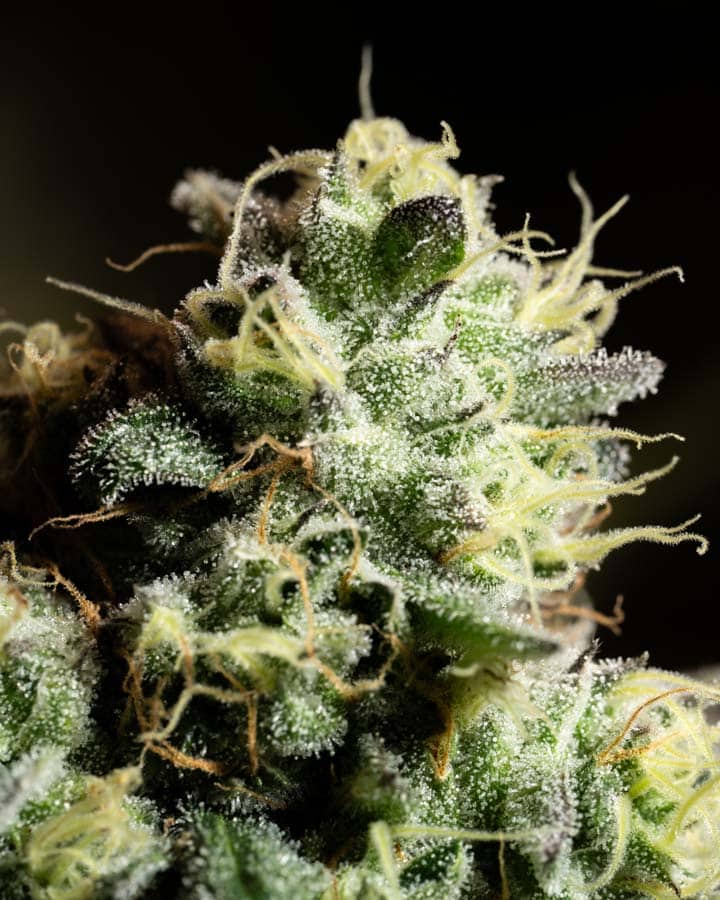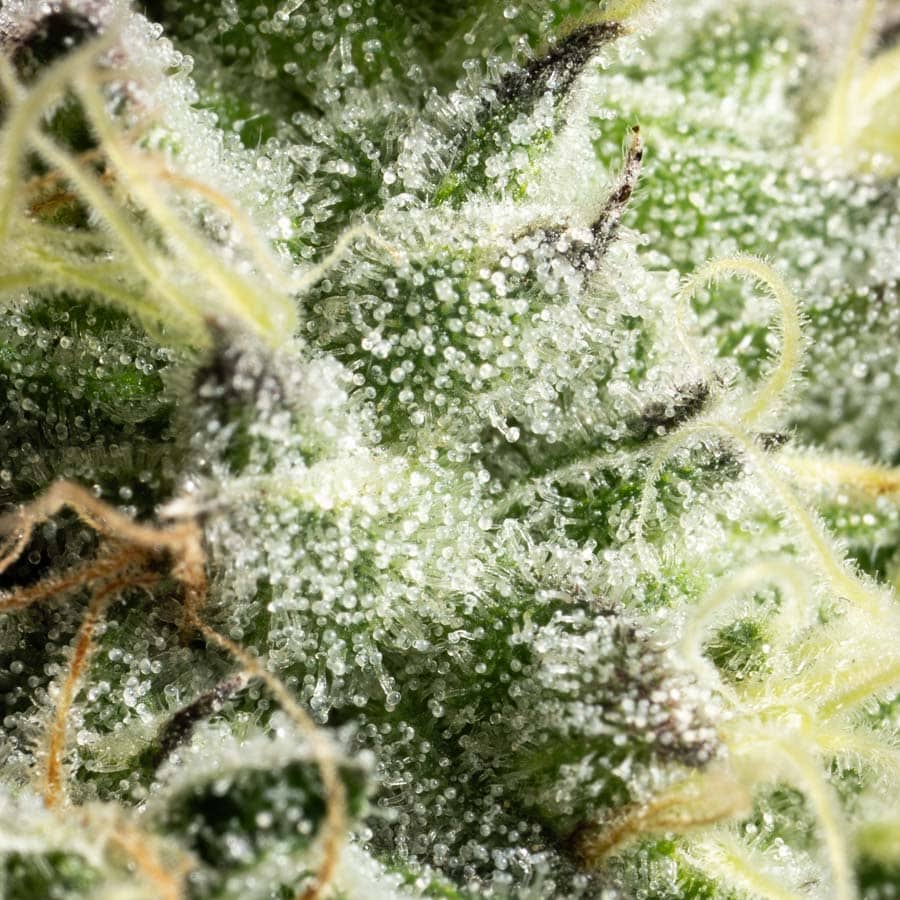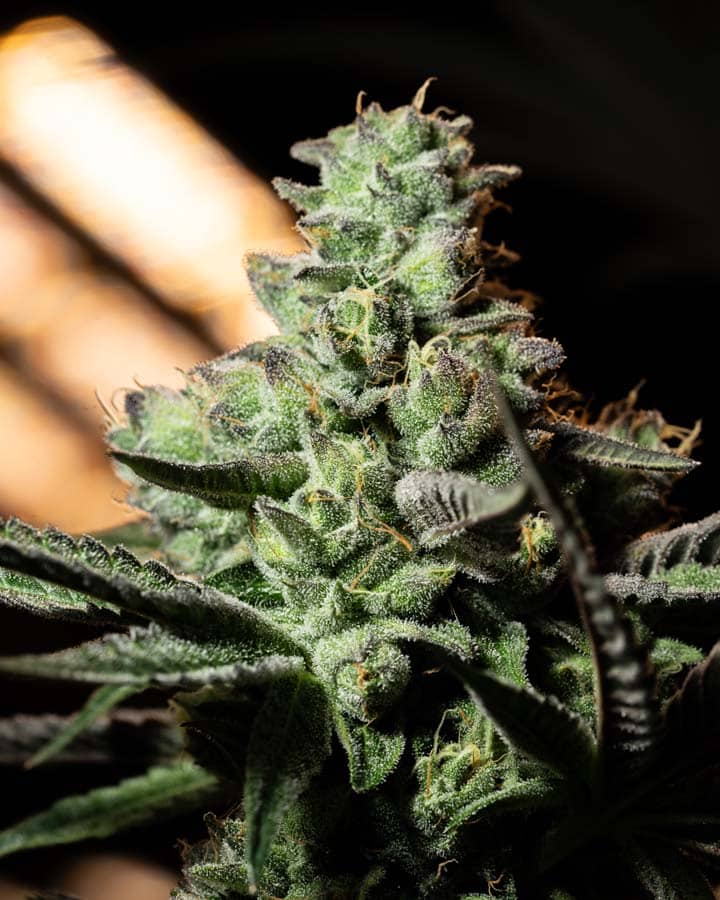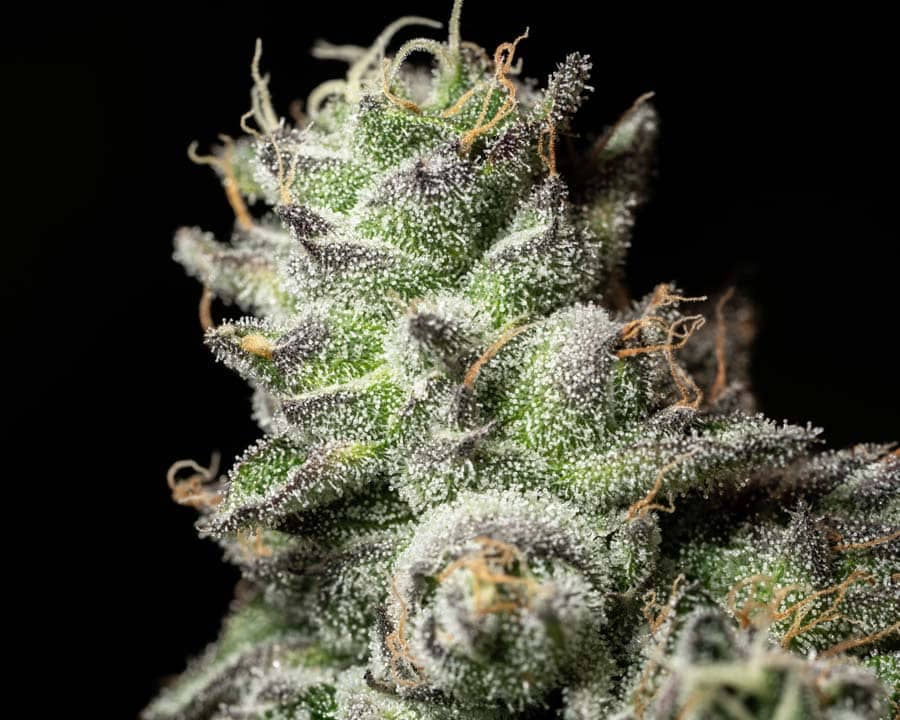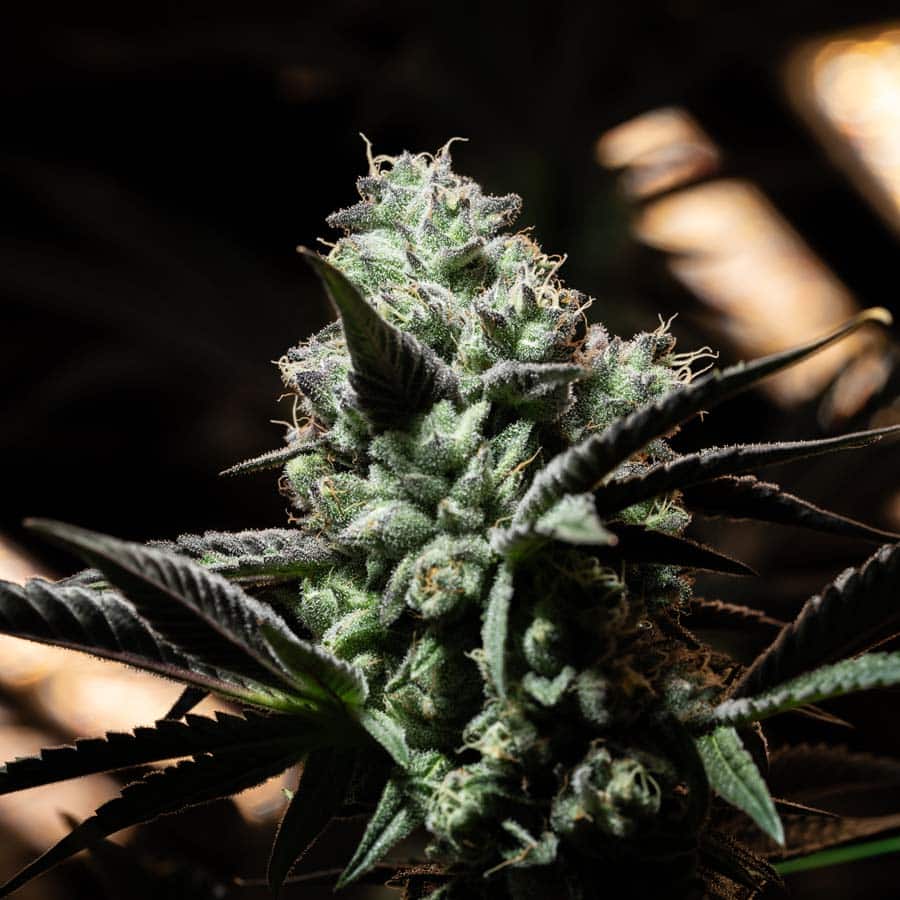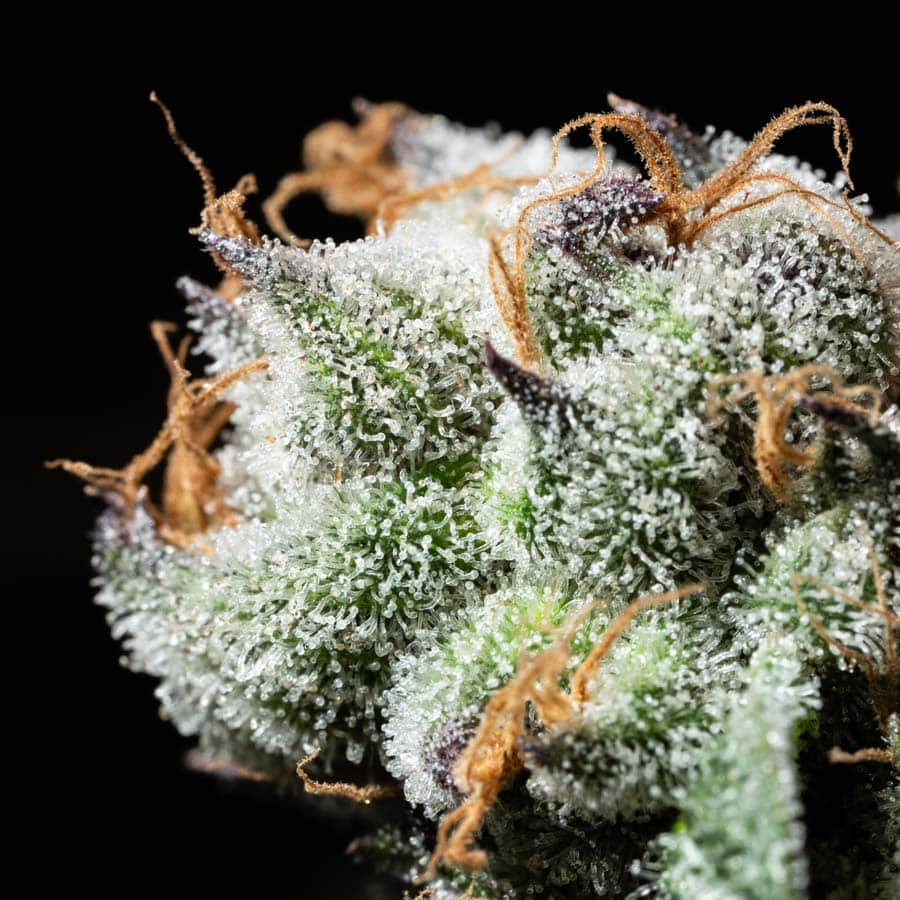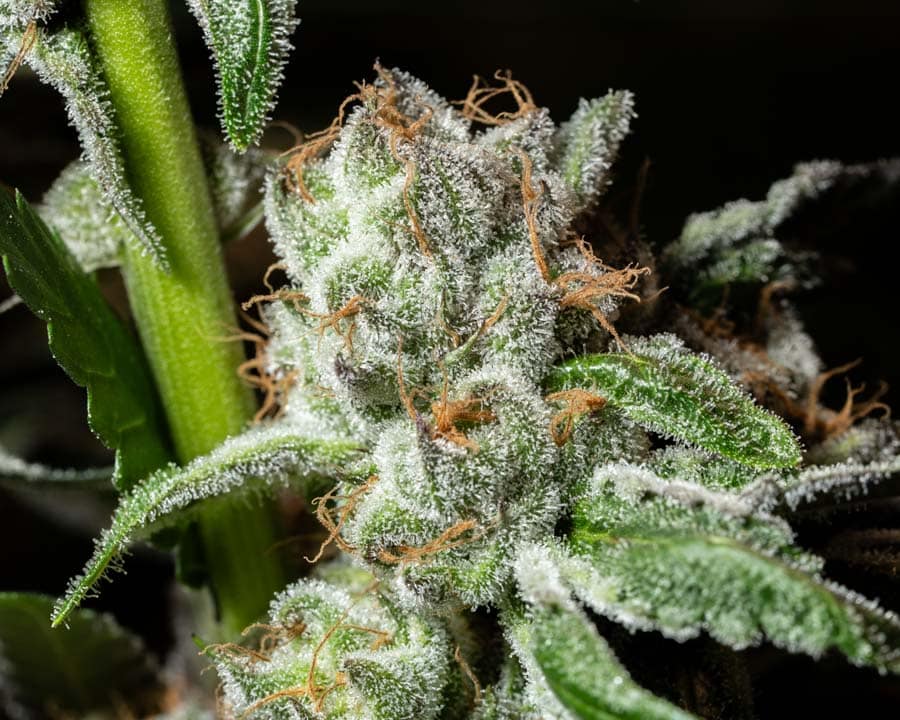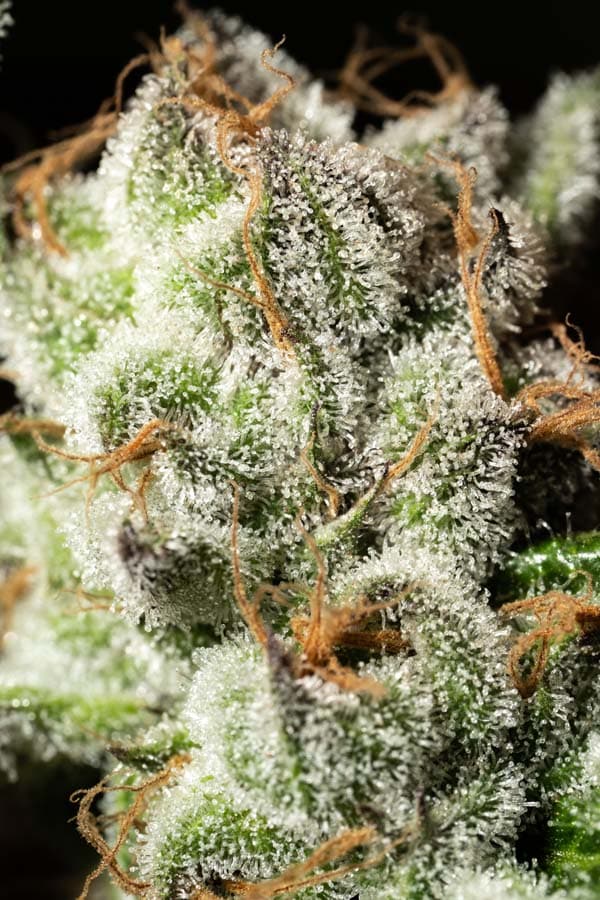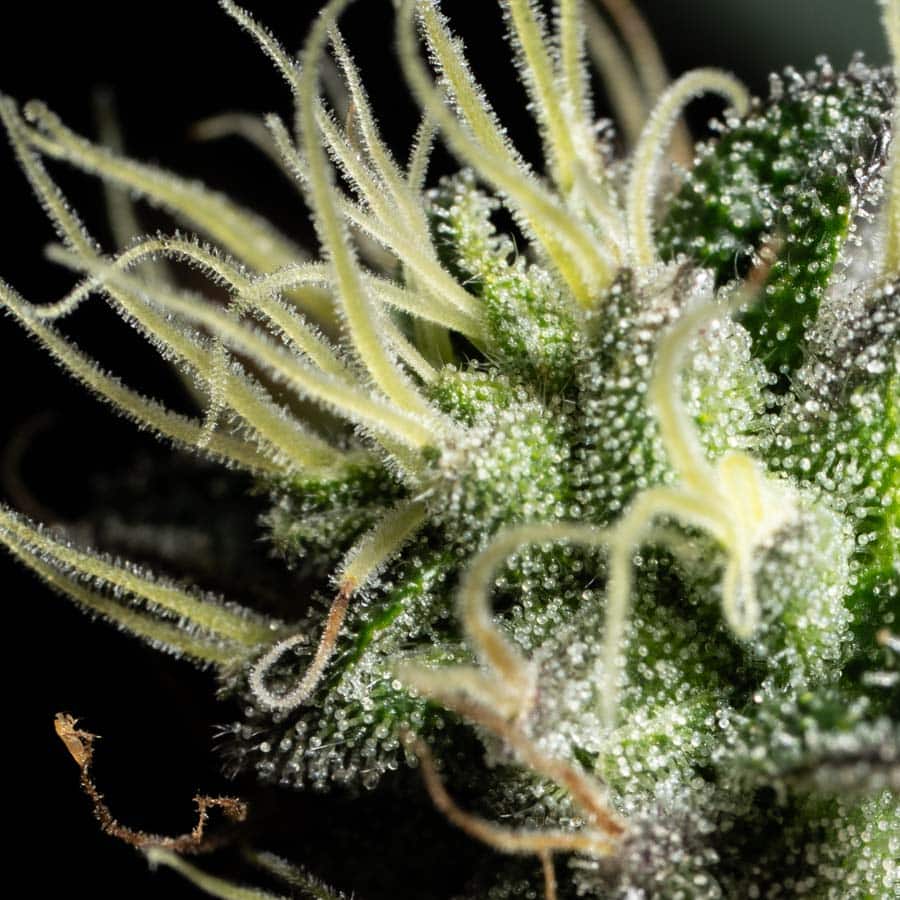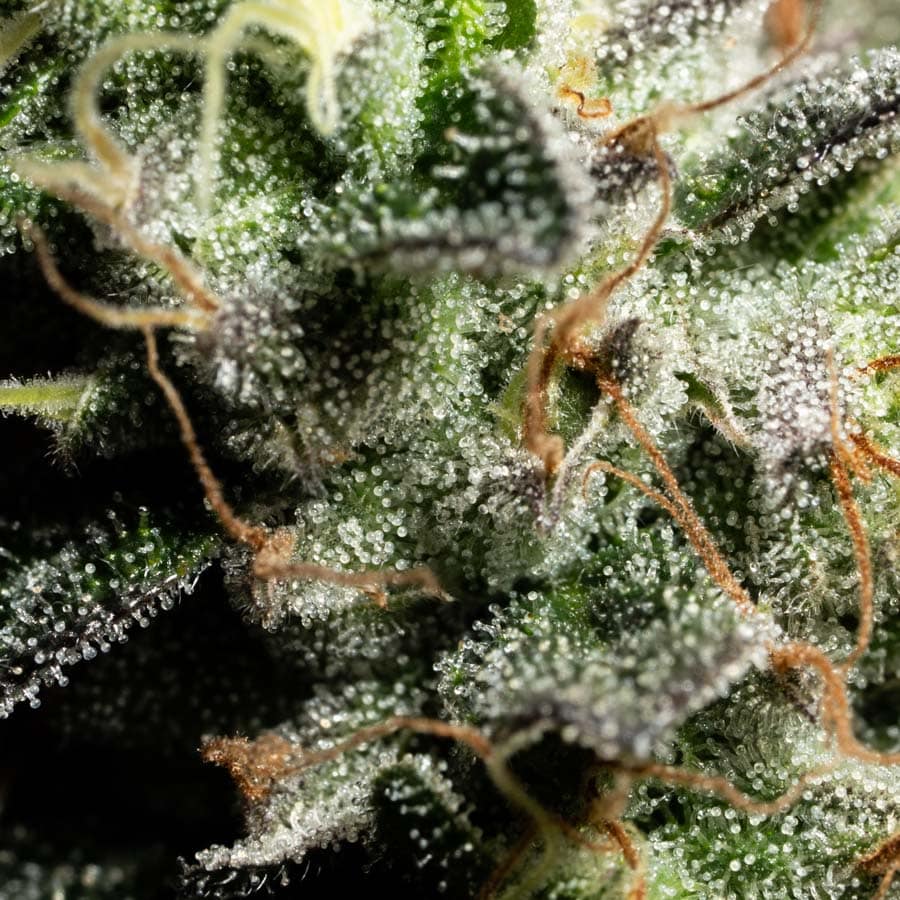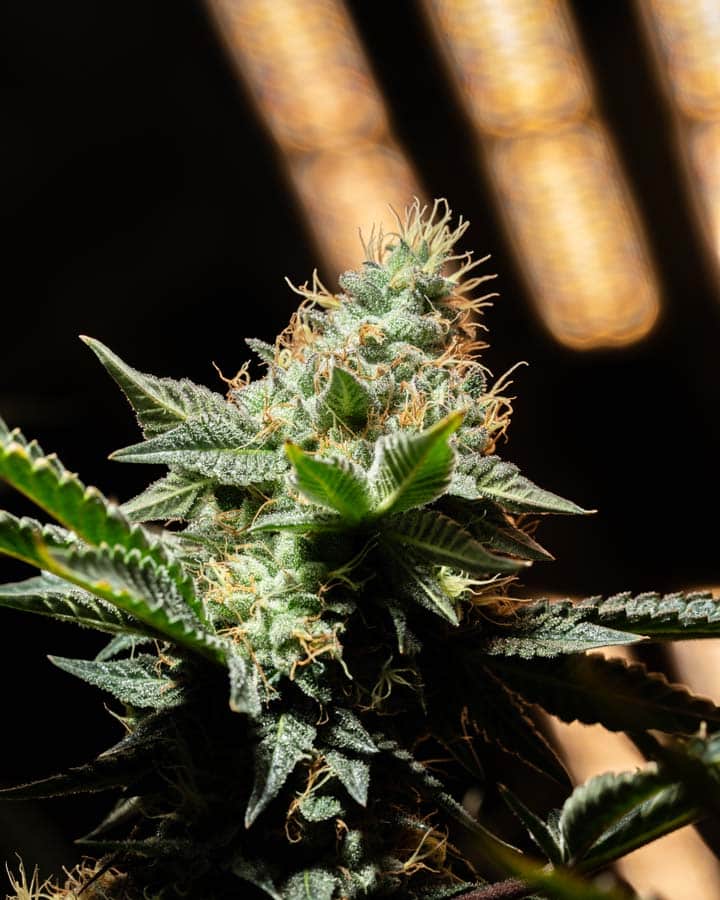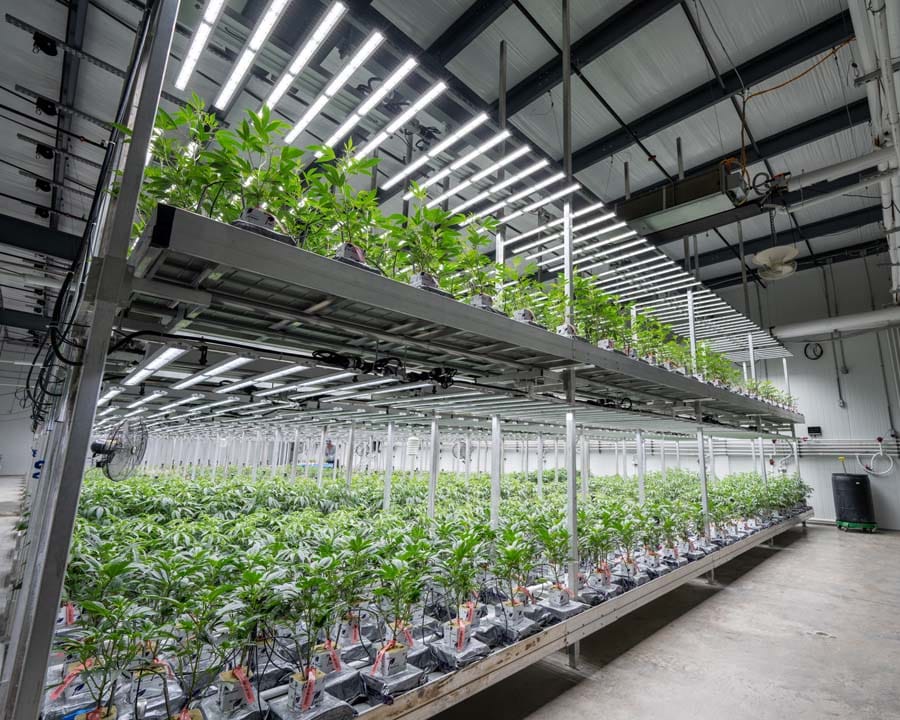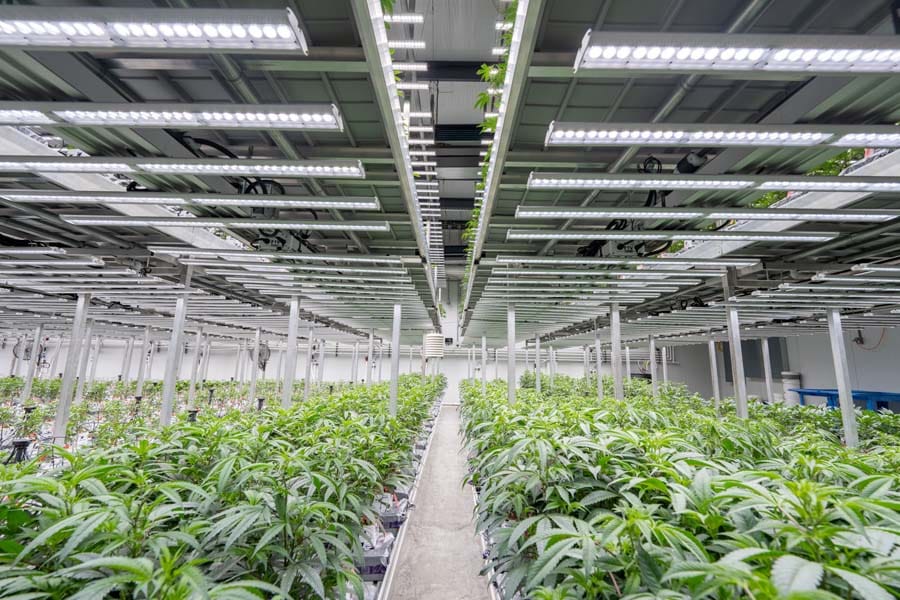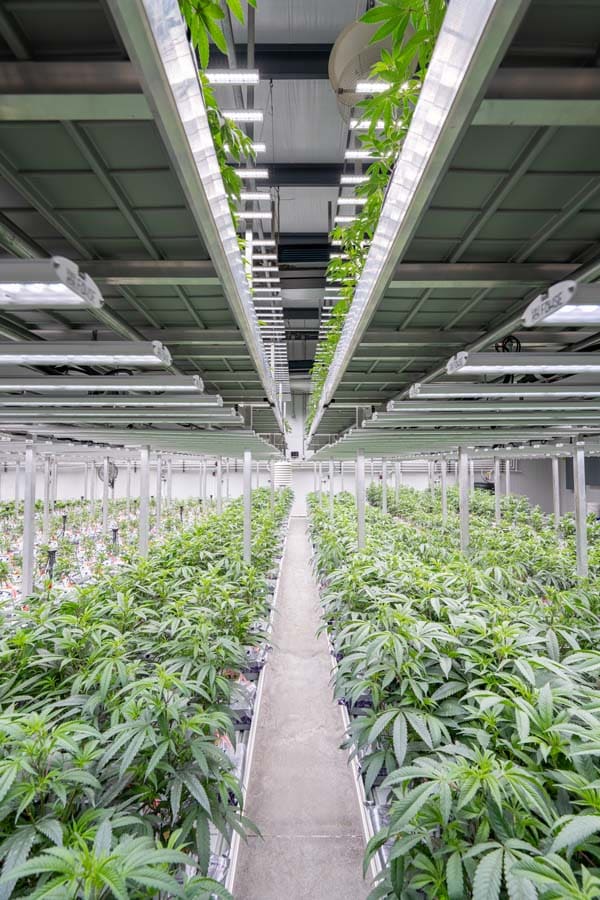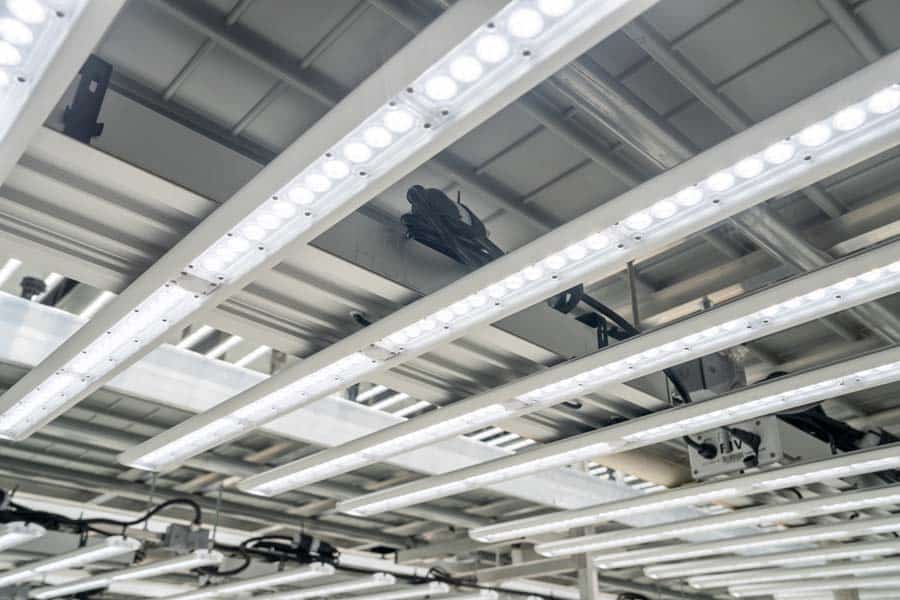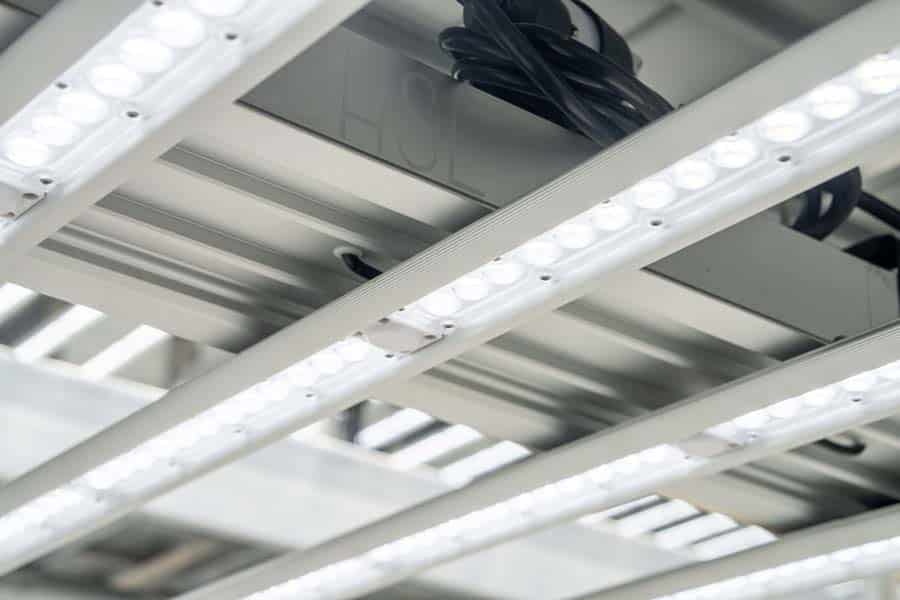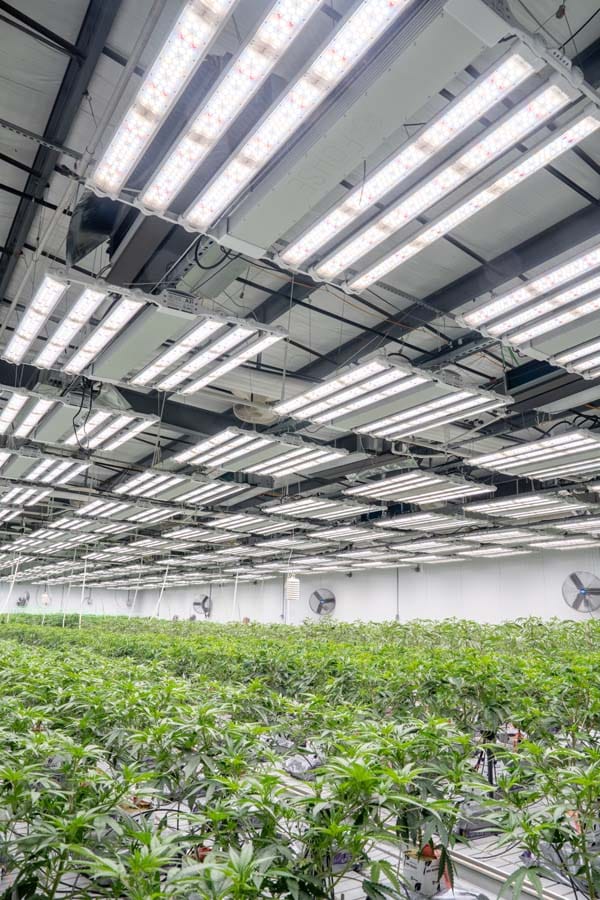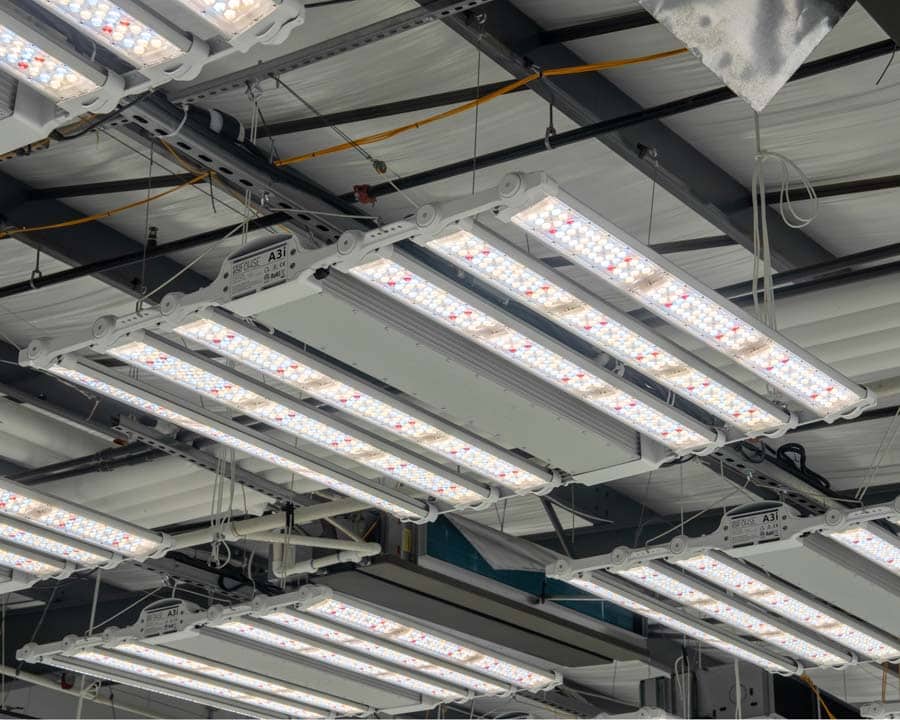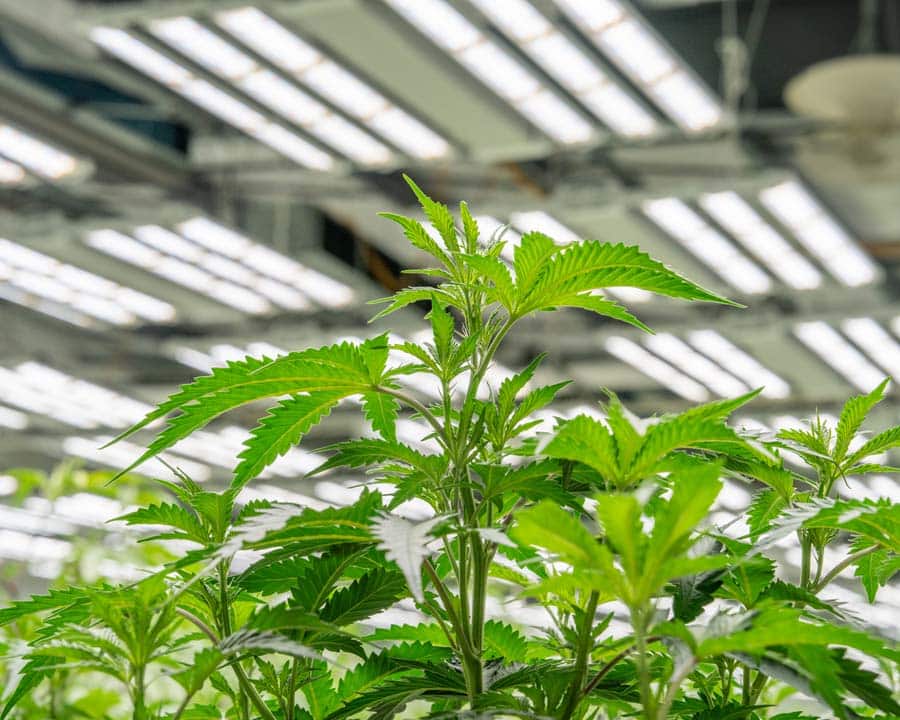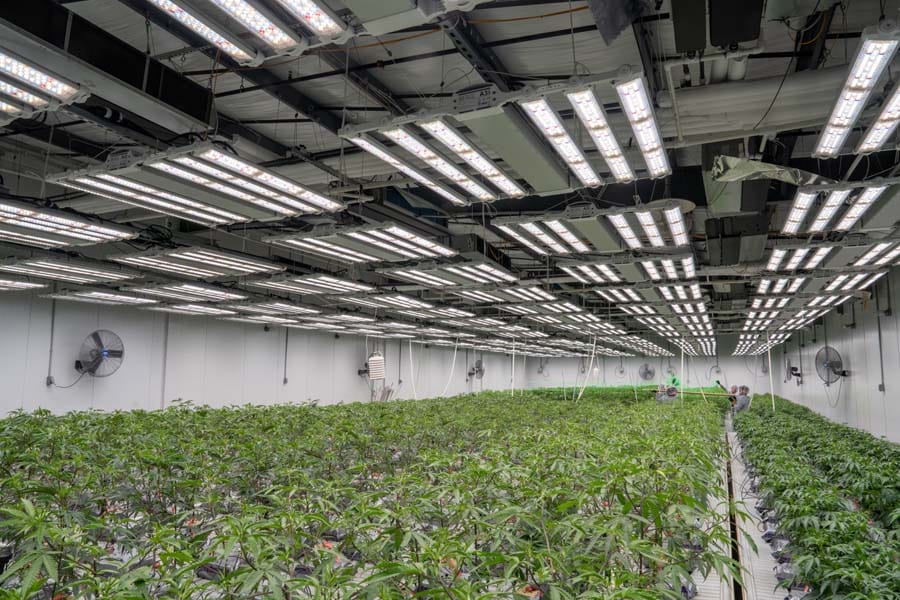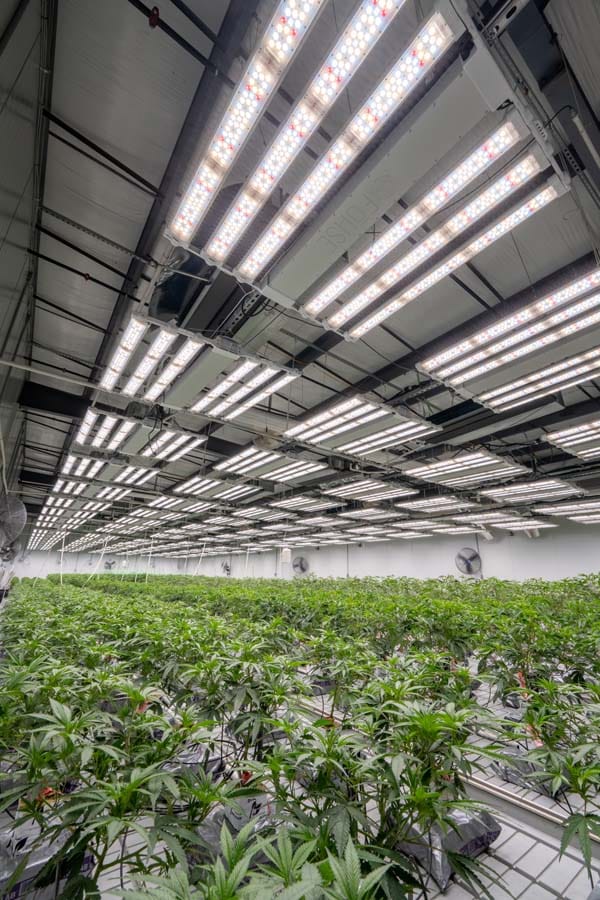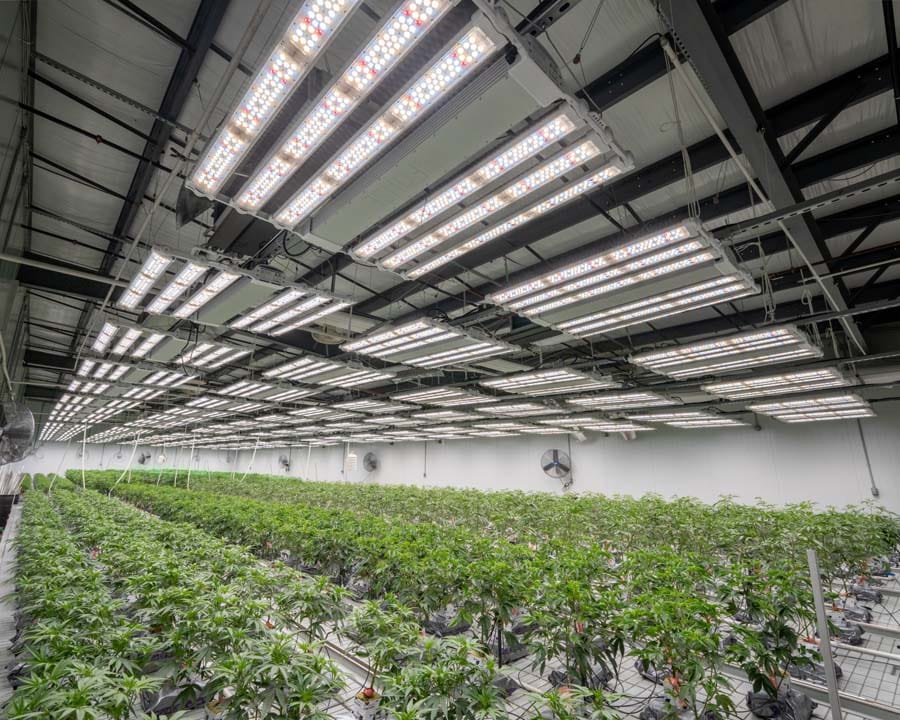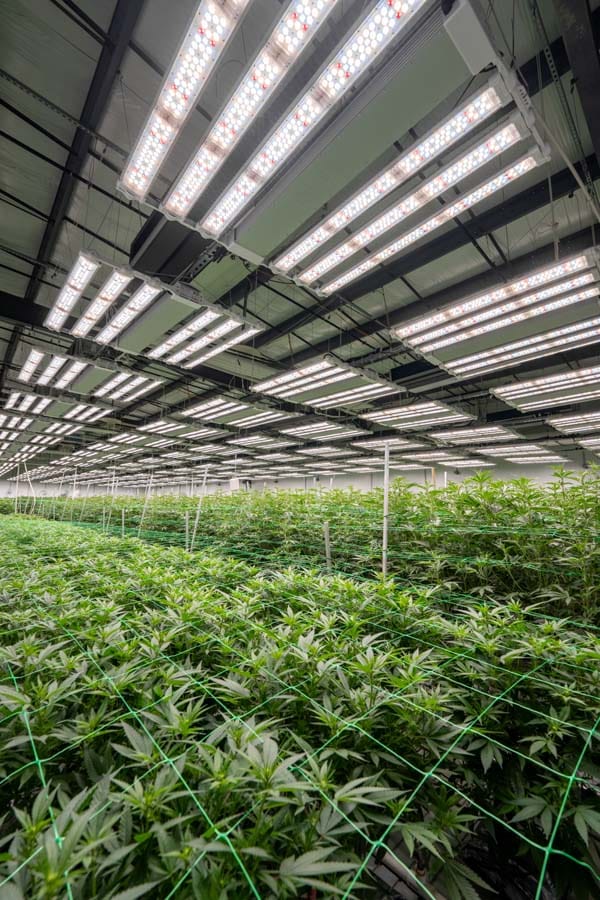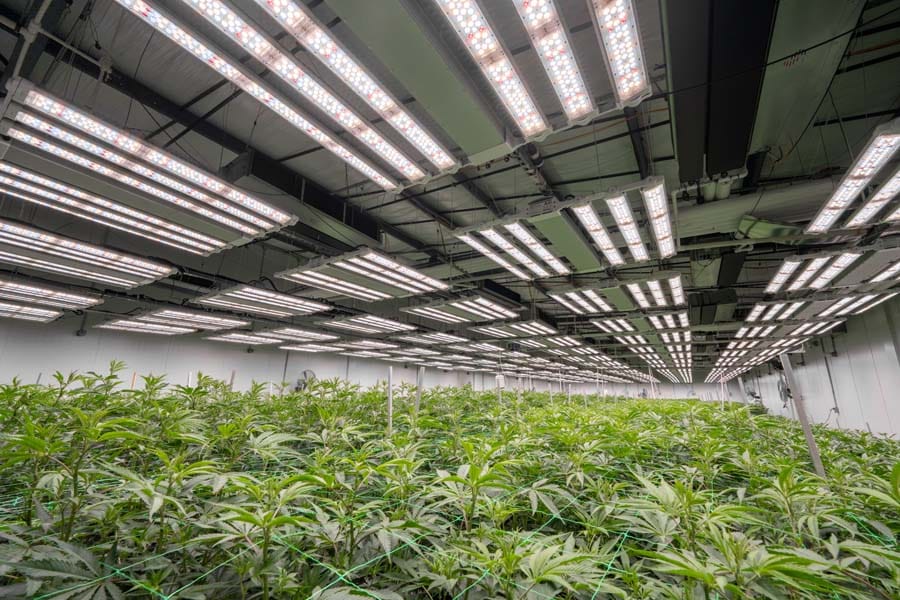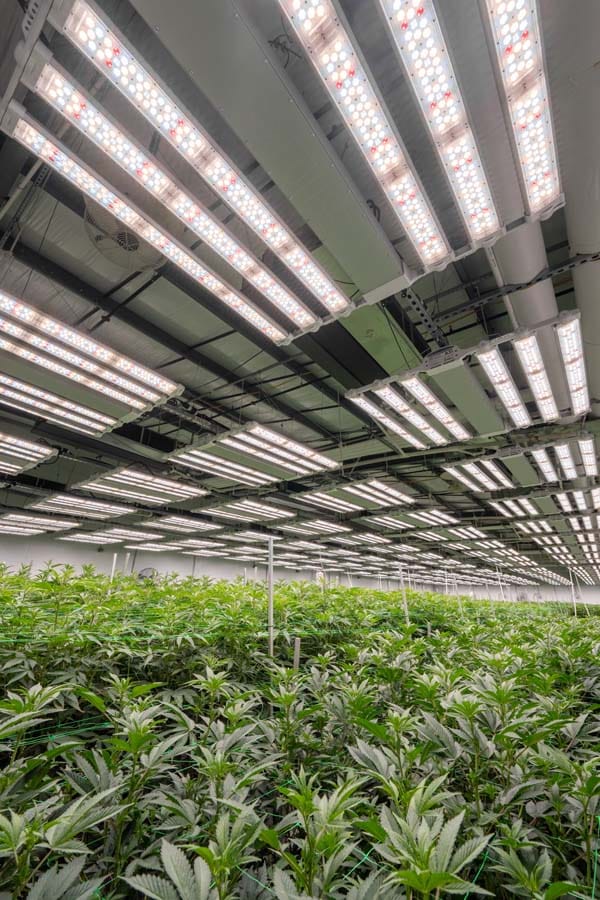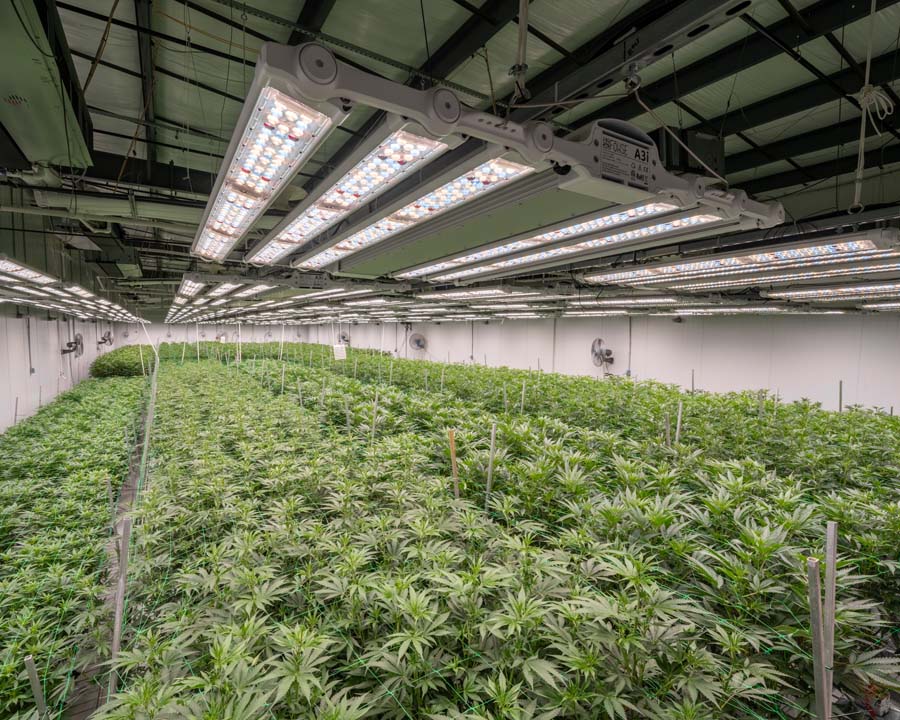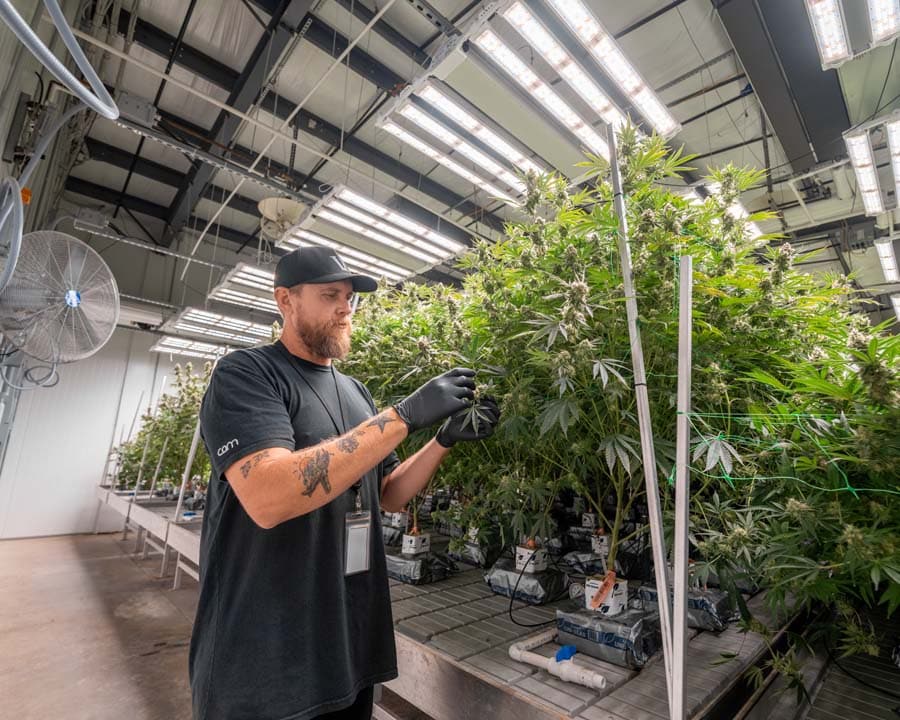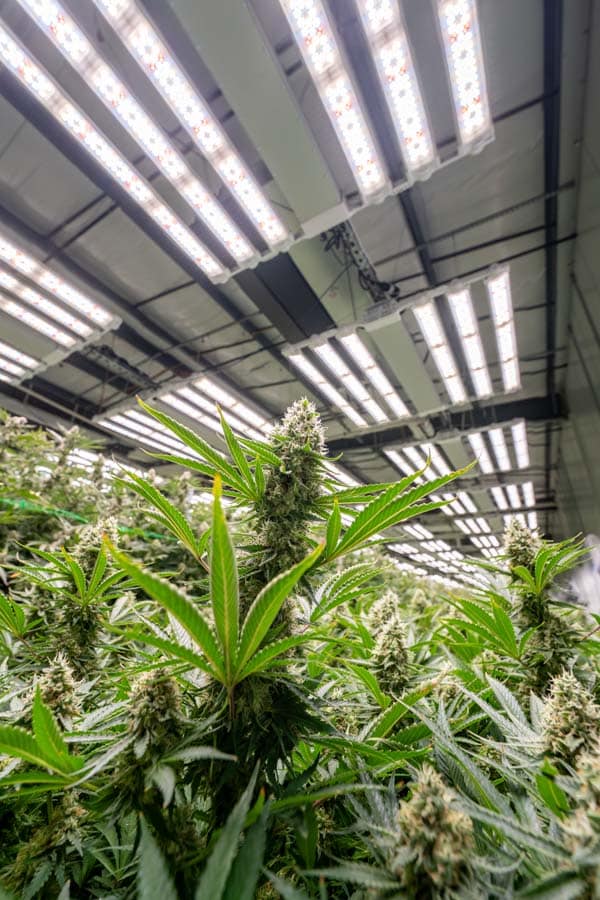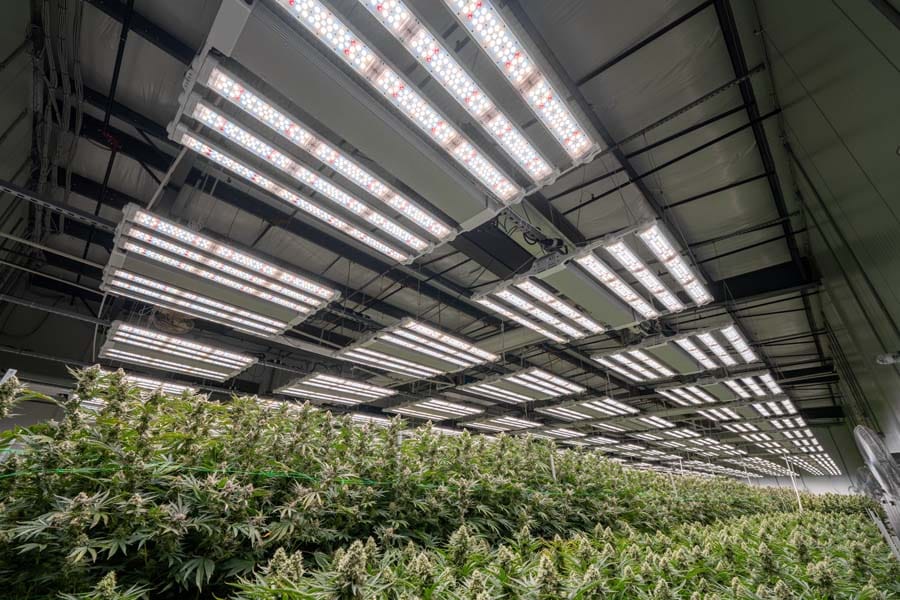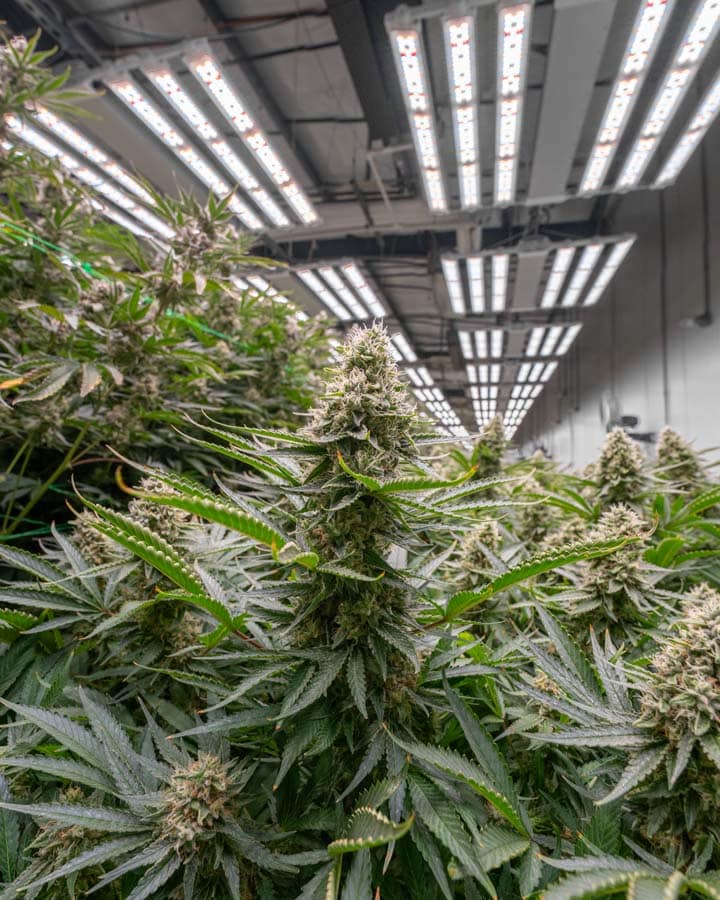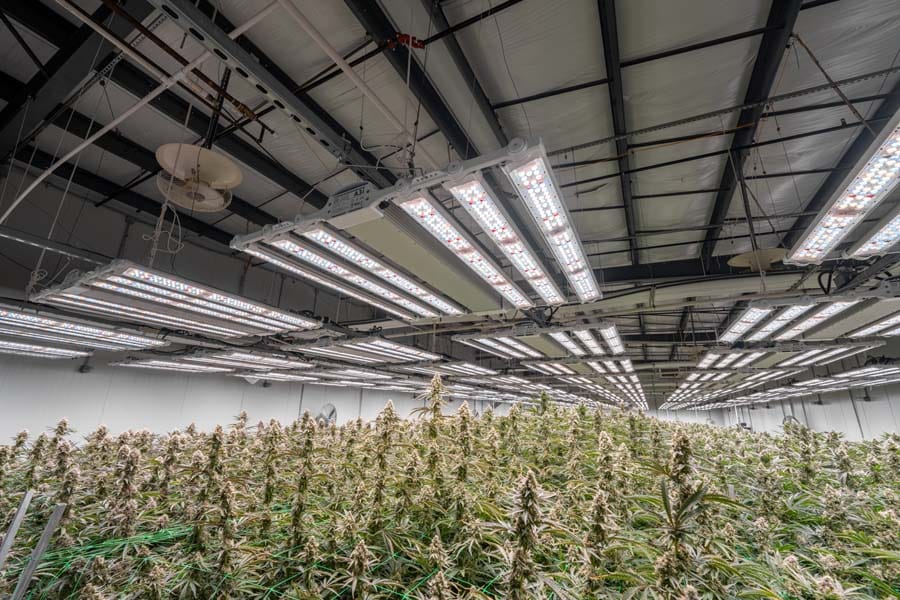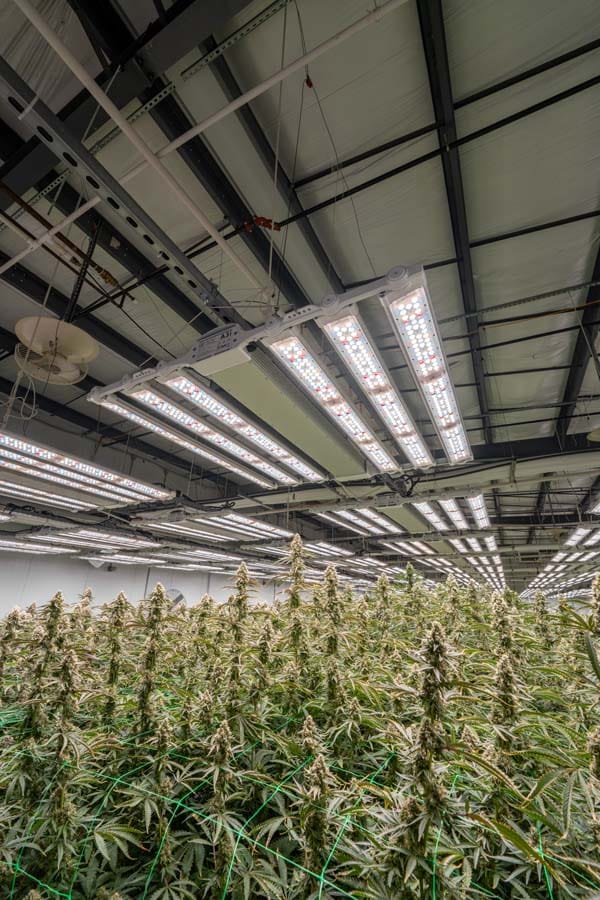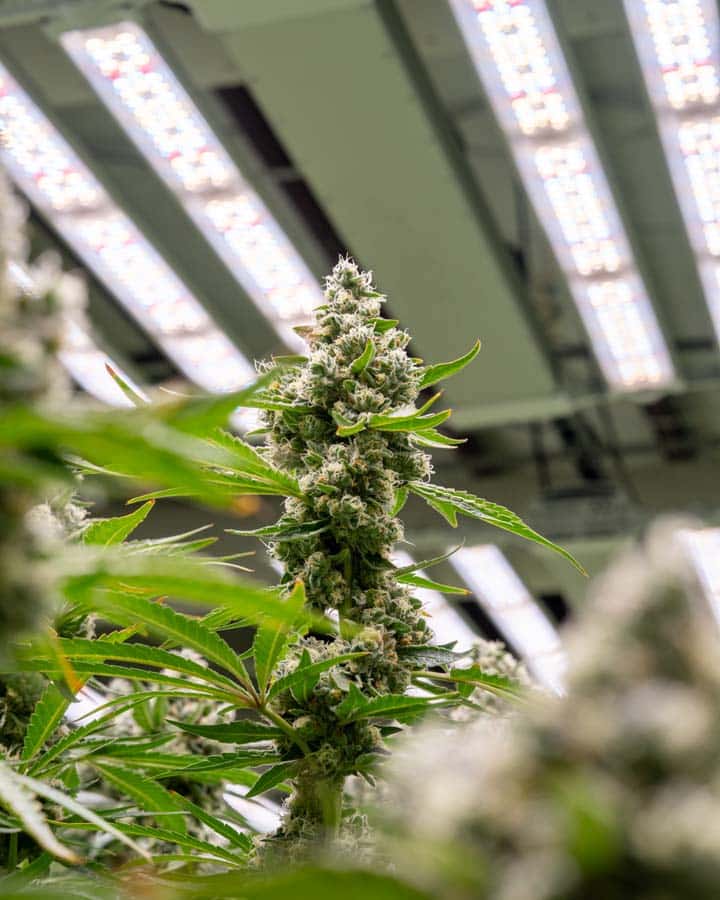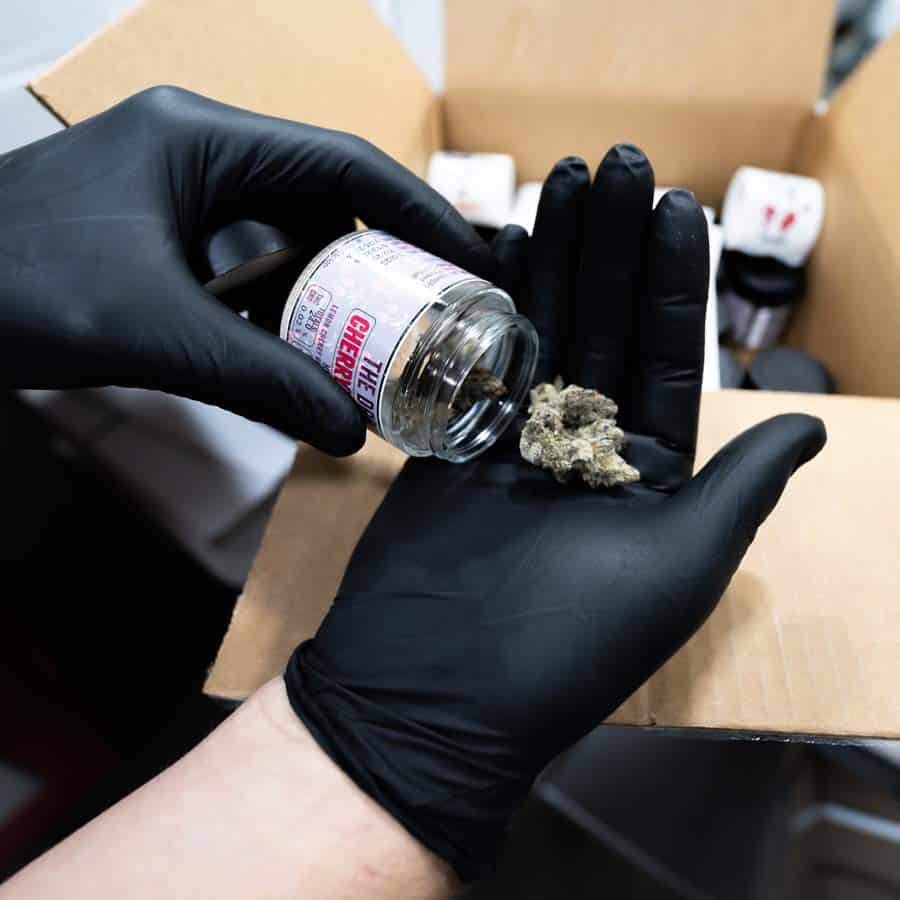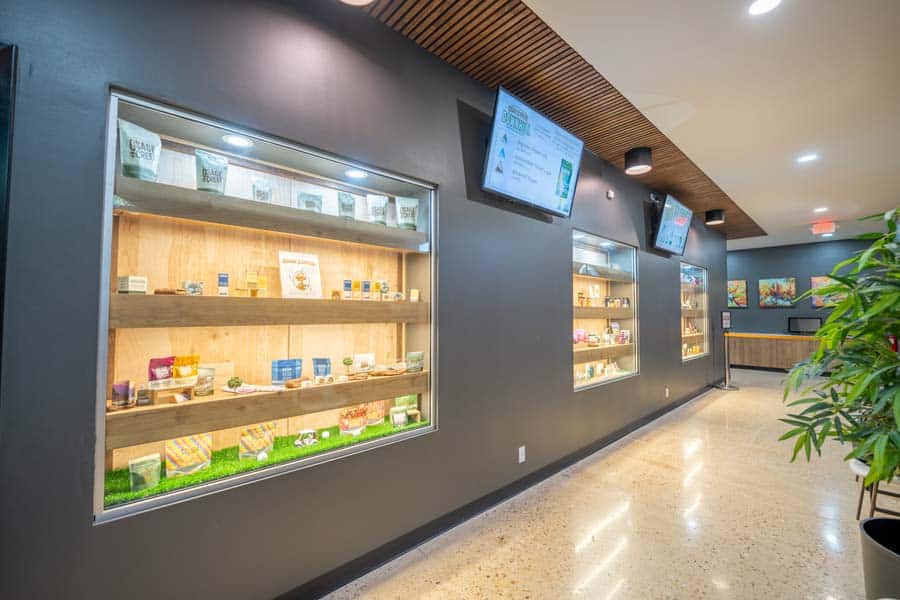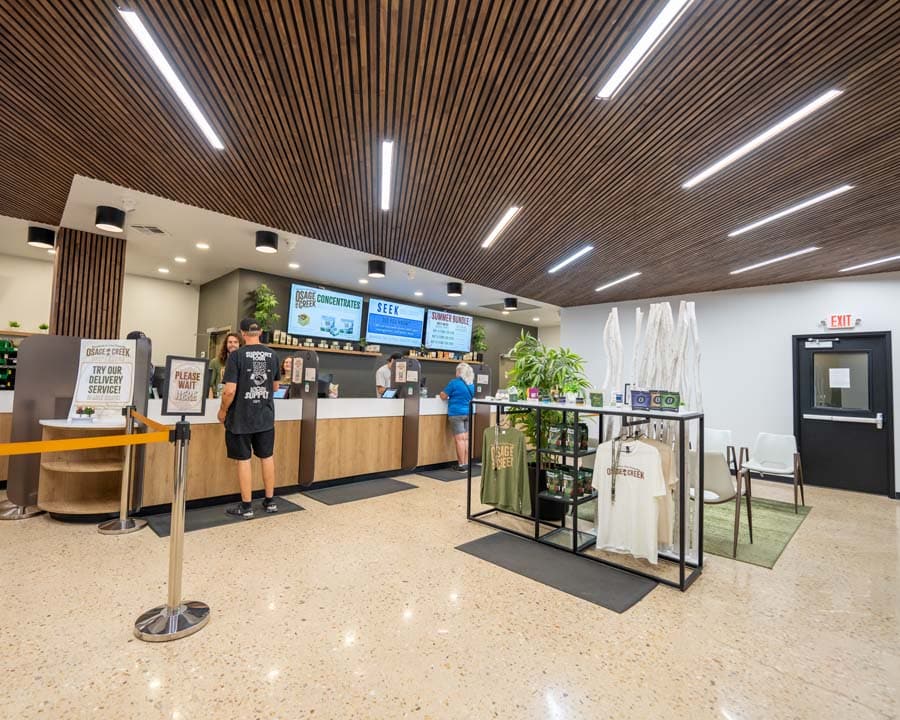This season finale is one for the books! Nutrient use efficiency is one of the biggest problems plaguing the cannabis industry today. With waste on the rise, developing sustainable models to scale into the future is vital. Brandon Rust has worked tirelessly to reduce the industry’s environmental impact through Bokashi Earthworks – a San Diego-based bio-fertilizer company specializing in natural bokashi fertilizers, biostimulants, biological controls, and more.
Please tune in to our season finale as Brandon deep dives into his passion for the plant and educates the Fohse team on sustainable solutions that can make a difference.
*Disclaimer these were transcribed from an audio file. Dictation Error(s) - The dictator himself / herself makes a dictation time error which simply gets transcribed verbatim.
Speaker (FOHSE)
We’re here in our operations to the table podcast series Welcome to the future starts now. What’s up guys? It’s Leo here and we are back with episode number 10. For those of you just tuning in, this is our last and final episode of season one. Man WoW has been a crazy crazy season we’ve had a great list of guests and for those that are just tuning in again, we’ve had Mr. Solo Rick Campanella, Steve Cantwell, and on today’s episode, we have none other than the organic cultivator himself, Mr. Brandon Rust, and you’re in for a treat within this episode, I promise you, you’re in for a treat. Also sitting in with us, we have our sales guru here in house at Fohse. He’s also an expert cultivator. His name is Mr. Evan, Marin and jelly. I probably butchered that name wrong, we’ll probably get into this episode. And then last, but certainly not least, you see this guy sitting in often, he is our VP of cultivation, and also our VP of public relations, he goes by the name of Mr. Mike Howard, anything you want to know about cultivation, once you purchase a focus fixture, this is going to be your guy, and I’m on today’s episode, we’re going to get into some goodness. So Brandon, starting with you tell me more about yourself, let’s get into the origin of Brandon Rust. Tell me more.
Speaker (Brandon Rust)
Sure. So I was introduced to cannabis probably in around eighth grade or so. And, you know, I was in foster care when I was younger, and we moved around a lot. And I went through a lot of things when I was really young. And as a result of that I was on, you know, pharmaceuticals and medication, stuff like that. And cannabis, you know, changed that, right, because it made me have a different type of Outlook. And so it was kind of a mental awakening, and it made me, you know, be able to process my thoughts a little bit better, and my feelings a little bit better. And so it really helped. It helped me not have to use those medicines, and it made me realize that I didn’t need those medicines to begin with. It was other people’s ideas of what I should be, is why they were, you know, putting me on these things to begin with. And so it was just a kind of a spiritual and mental awakening when I started using it, and it just had a really profound effect on me. And so that is one of the ways that it has, you know, really helped me. And, you know, I just kind of pursued, I pursued a career and even though it was illegal, because I loved it so much. And I just felt like it had such tremendous benefits. And it was profitable as well, right?
Speaker (FOHSE)
Of course, profit, profitability always helps, right? So how did you transition from, obviously, being a partaker in cannabis at an early age recognizing its influence and its effect over the traditional medications that they were giving you as a youngster? Right? How did you transition from that into the focus on soil? And all of that, let’s give me a little bit of that.
Speaker (Brandon Rust)
They had been cultivating indoors for you know, since the really early 90s. Some of them were late, late 80s. And I was introduced to them, and I knew what they were doing and I you know, put in a lot of work. Because I wanted to work with them. I wanted to get into the business, I wanted to see what they were doing. I wanted to get into their grow houses. I wanted to fucking smoke their weed. I wanted to be part of that like, thing, because that’s something that I had been looking for, you know, because I had always been looking for the best plug because when I was younger, I was fucking slaying weed, because I couldn’t financially really support the habit that I had, you know, I smoking weed every day. So it’s like, okay, what am I gonna do? I’m gonna buy more than I could smoke right? Fucking sell half of this, I’m gonna make more money back and I can keep doing it at least right? So that’s how it kind of started right? And then you know as you get a plug in you got to study plug when you’re young then people are like, Hey, where’d you get that and then it turns into a little thing you know? And next thing you know your swag and wait. So I mean, that’s kind of how it started. It was just wanting to be able to support my own habit and wanting to be able to find better weed and you know, better better connections. And I knew that these guys were cultivating and they had been for a really long time. And so, you know, I worked with them and I was doing things at first just like washing their dogs and mowing their their yards and just doing bullshit you know washing hydroton rock, you know in the back in their backyards and shit like that like just washing buckets not not never seen a system never seen what’s going on I did that for months, months before they ever brought me on board and like, took me to the grill house and stuff. And you know, when they did it was back then everything was super clandestine. It was one of those situations blindfolded thrown in the back of the truck drove into the Grow house. And it was crazy, because, you know, I got in there and they should have seen my first like, legit grow. And it was just plants. They were seven feet tall, and the whole room was packed.
Speaker (FOHSE)
Did you hear the little “ahhhh”?
Speaker (Brandon Rust)
Just like that, you know, that bright light hits you and it’s just like your base in the in the, in the glory of the jungle that’s inside of a bedroom where you absolutely know, you shouldn’t be at home, like let’s go to you can’t do as a kid, it’s like, it’s exhilarating. You know, because it’s the thrill of like, knowing that it’s not not that it’s bad, but that it’s still illegal. And it’s like, you know, it has that it still had that kind of ambiance to it, or, you know, still had that like, thing about it, where it was kind of like mythical, you know, it was like, Dude, the girl happy, you know, the thrill. It was the thing that I had been, you know, reading about in High Times magazine since I was a teenager and stuff. So being able to see that and then being able to work on that. And, you know, I worked with those guys for about two years. And then after they showed me the ins and outs, we were all grown in the ebb and flow of the two gallon buckets that were filled with hydrogen rock. And you know, we were growing the Afghani bowrider, purple Kush. And we had a bunch of different places. We had a couple apartments, a couple houses, and we’d go to service everything every day. And we did that with those guys for about two years. And then I got my own partners, and I, you know, I’ve been doing it ever since. In 2006. I did go to prison for cultivation, sales and theft of electricity.
Speaker (FOHSE)
Theft of electricity?
Speaker (Brandon Rust)
I had other charges when I had to plead to them like, they, you know, they’ll tap on every other thing that they can think of, you know, like misdemeanor does this and this and that, you know, and it’s like, okay, just plead to this. And you’re going to do a 32 months prison term with halftime because it’s non violence, your first offense. And, you know, I did that I got out in 2008 went and got some stupid job while I was on parole, because I at that time, you could get off parole, and like 13 months. And it was totally possible to do you just, you know, have to have a job and be, you know, have an apartment. So I did all that stuff. I was working at a pizza place. And I absolutely hate it. I was like, This is terrible.
Speaker (FOHSE)
Because it is.
Speaker (Brandon Rust)
Terrible. No, no, it’s not something that I’ve been doing for a long time. And so it was just a thing, just to satisfy the courts. But at the same time, a couple months and start feeling comfortable, start feeling things out, it was going pretty well. So I was like, you know, I’m gonna hit him up, hit up my boys and, you know, get plugged in and get some weed going and start saving up and get another girl going. So it’s, that’s how it’s always been like, if something has happened where I’ve gotten knocked down, it’s like, okay, get knocked down, do what I need to do, but I’m gonna come back and I’m gonna come back stronger. You know, and, you know, I just, that’s, you know, I just keep growing, you know, since and I was out in California doing this thing forever, down in San Diego, and back in 2015, I did another prison term for manufacturing. Because that was when the Shatter craze was going on. And I hadn’t actually learned how to make butane hash oil back in like 2003. And so I knew all about it. I knew how to do it. And I was like, oh shit, like, I’m gonna hop on this because there were all these new companies. And it was like it was we it was a weird transition, especially in San Diego because you had a bunch of like semi legal dispensaries that weren’t really legal. They were kind of still black market, but it was under Prop 215 pre 64 And it was this weird transition period where prices of stuff started to drop because a lot more people started getting involved but then you saw like, black market brands, like that were in dispensaries at the time. And so it was just like, it was a huge fucking like, cash grab. Everybody was doing everything everybody was doing the most and I was like, fuck it, I better fucking hop on this and and start making some hash. And I just started making a bunch of you know, we were doing like it was still early days we’re doing all open blasting then and then don’t put in the oven vac in it. And so that was like this was pre my pre organic. Yeah. And I think this happened and I think no, no, I’m still growing organic when I think this happened I had just switched over, but I was still doing there wasn’t resin and stuff.
That’s like where it was at. And so I was doing that and some weird shit happened with the neighbors, something completely unrelated. And the sheriff’s ended up at my house and like, long story short, I did another prison term for that. And that was when that happened. I went on the run. And I was like, you know, I did all I did. I did all my main court appearances. And I knew fully well that at the end of this thing that I was going to skip out on my last court date. Just because my thinking is look, I worked way too hard at what I do, like I bust ass to fucking grow weed and I, you know, hustle my ass off, and it’s like, you guys are gonna have to fun Come find me. And so I played it all out just so I have more time out and I can get things together, get money together, that kind of stuff for when I do know that I get locked up, I still have support and I have a backup, you know. And so I stretch that whole thing out and then I dip out and I get another 14 months. And that’s actually when I started the Bokashi earthworks company is when I kind of really started running with it. This is actually a friend of mine, an older, an older woman, she’s retired and she likes these hobby businesses that she started and I was already using Bo Kashi in my regiment. And what ended up happening was, she had started she’s like, Oh, doing another hobby business like she does. And I was like, Hey, this is a cool idea. I’m going to start rolling this stuff up, and I’m going to start doing this. And so I you know, really started running with it and started putting stuff together and had stuff in the shops down in San Diego, like San Diego hydroponics. And I’ll still run it this time, though, you know, and so I got it. I had another grow. I was fucking trapping doing my thing fucking slang weed doing whatever. And I had put money aside, I did eventually get caught up in when I was locked up that time. I was like, I gotta figure this out. I was like, because California ain’t fun and working out for me. I’ve been doing this for fucking years. And it’s been up, you know, ups and downs the whole time. You know? Like, what, which is cool, because I mean, it’s fine. I love it. And the reason why I loved it is because it gave me freedom right? I think the biggest thing about cannabis and thing that I think legacy cultivators really feel the most is that haven’t been able to be self sufficient with something that you’ve created and made yourself that gives you independence financial independence, you don’t have to pay taxes and get raped on like, you know how much money you have to give the government and it gives you the feeling of you know, being self sufficient and self sufficiency is the base of like true independence and so with an unregulated market and with the ability to support yourself and your family it came that sense of like real independence which is the base of the American dream right it was really like the almost kind of the last the last you know business in America that is like true the true American dream where it’s like you’re not getting taxed to death where you can survived Yeah, like and have open free markets and now those open free markets have become something completely different, you know, where the consumer isn’t even really allowed to touch and feel a product and and you know, in certain situations depending on where you are
and so you know, that was the thing for me I didn’t want to quit this ever because I love this and I loved what what is given me even though it’s given me bad times to it, but I love this and you know and so I wanted I had to figure out while I was in there, how the hell am I going to make this thing work to make sure that I can continue to do this and support myself and help educate people and in you know, share the knowledge that I’ve acquired over the years and the experience that I’ve had with this plant and not just from you know, the soil science side and the cultivation side, but from actual that the side of healing side You know that because we all go through those traumas and stuff, like I said, like, shit that happens in early childhood or things that may happen to someone might lose their parents and stuff like that in like being able to have some type of medicine for the head, it helps man and helps with that trauma and you don’t have to be on. You know, these like heavy psychedelics that turn people into basically zombies like it did me, you know, made it so I couldn’t feel it made me feel sluggish and slow. And it didn’t make me feel like the person that I was, potentially meant to be. You know, and I know cannabis isn’t for everybody, but I feel like it’s good medicine for a lot of us. And so I wanted to be able to share that with people. And, you know, and I didn’t want to stop because I love growing the plant. I love what it does, I love smelling it and touching it and, and using it as medicine. And so I formulated a plan I wrote everything down and I, you know, I, I’m
I’m one of those guys who’s super curious and wants to know a lot about everything, you know. And when I was younger, I spent a lot of time in the library reading about ancient history and in like, the mind and like all these different aspects. And I just started to realize, you know, Hey, I am responsible for creating my own reality. Like I need to set all the things that I already know in motion. And so I started writing things out, I started making comprehensive plans. And I wrote and wrote things out really mechanistically this is what I want, these are my goals, this is how I’m going to get it. And you have to set a plan in motion and then you have to take the steps and put in the work. Right? Because that’s the biggest thing. When you when you vision yourself where you want to be in the goals that you have, that’s one step right but you have to take that and put it into reality and just by writing it out, that’s the that’s furthering that step right and so, and then look at it Okay, now you have this on paper and now we can go it’s like you have everything written down for this so you can make your show run smoothly, where it’s like you do the same thing for all aspects and say how do I incorporate Bokashi earthworks and education and cannabis branding and marketing and how do I make this a whole comprehensive business you know, how do I make this to you know, so I can help people and also support myself and my family and help support the people that I work with you know, Pete the people like organic glaze and red dirt raised and quarter Creek cannabis and native provisions and the people that are that I work with regularly to help create high quality, consistent organic product and you know, keep them brand visible, right, keep their names in the public eye and knowing hey, these people are all always going to be producing high quality product because they’re following a certain standard operating procedure that’s been put in place by Bokashi earthworks William my company or earthworks agriculture, my consulting LLC. And make you know, because it’s huge when we’re talking about cannabis as a business, like all those things matter, having good quality and being passionate and having a mission. But you also have to have brand visibility in this day and age as a small business, it doesn’t matter if you’re in cannabis or not, what you need to have is you need to have a market, you need to know who your market is, and you need to have a way to reach those people. And, and sometimes, you know, there’s like, there’s what’s called, you know, how much customer acquisition you know, and you can do, you can get customer acquisition and not have to pay for it if you do that by being part of that community and engaging with that community. And, and, and helping with the educational concepts in buy in by featuring like the new sciences that are coming out and saying, Hey, you can do this. And this works for this type of setup, and being able to introduce the new concepts that are coming online as we progress further and further into like the science, the science of lighting, the science of soil, the science of the different microbiology that you can put into the soil systems, the science of green waste recycling, or carbon positive farming, like all these things are becoming more and more prevalent. And especially when it comes to scaling these systems and becoming cost effective. Because things like nutrient use efficiency is a huge, huge thing that we have to look at. And if you’re using chemicals that only have 15% nutrient use efficiency. It’s very wasteful or if you’re using media that can’t be recycled, that you have to constantly pay. That’s not a sustainable, scalable model. It’s when you’re able to implement the systems where you’re able to do recycling of the media and not have to do to throw things out doing things like composting using earthworms to break down the material instead of having to To put it in a waste bin and have a collection company spend money to pay for gas and food, like a lot of the things that are implemented in a lot of these types of legislative models are just not comprehensive to, or conducive for like the for reducing environmental impacts. And so when I’m talking about building out, like, you know, these models that are based off of data analytics and green waste recycling and stuff, we’re in cost effective mineral inputs. That’s what we have to look at, we have to look at like, I mean, that’s some things that we’re dealing with, too, is the legislative bodies. I mean, we were over at the facility yesterday, and they were talking about how they couldn’t do their own plant ferments and stuff, because, you know, they couldn’t make their own inputs, essentially, is what the state was telling him, he couldn’t even put his green leaf back in his beds anymore.
And that’s, and that’s really interesting, because you can, that that material doesn’t contain any, you know, psychotropic substances, it’s not going to get anybody high. And you’re basically just creating more waste. And that could go back into that system, that’s going to break down carbon, carbon, mineral, mineral nutrients, and it’s going to feed the worms that are in there, and it’s going to help sustain the longevity in the health of that system. And it’s a component that they don’t want in there. And they don’t not want it in there. Because they don’t want an in there they don’t want it in there because they don’t understand the system because they’re not educated on why it’s important. And that’s the real issue. And that’s why it’s important for people to come on these types of things and talk about these issues, like some of the legislation, and a lot of states aren’t conducive to being green. And that movement that people really want to push forward on, like people want sustainability. People want to have regenerative agriculture practices. And I mean, some people like to ridicule and be like, Oh, well, it’s indoor, you know, how regenerative is that? And it’s like, well, we can still reduce our, our carbon footprint and the impact that we’re having, you know, in that is important, too, because just because some people don’t want something to exist doesn’t mean, it’s going to stop existing, you know, and it’s like, so the best thing that we can do is help change the system and help it be more cost effective means be more energy efficient, be less impact, reduce the little impact of the negative impact from farming.
Speaker (FOHSE)
Earlier you mentioned impacting the science aspect of what you do. And I wanted to touch base on your carbon based fertilizer. But before we do, and I didn’t make sure I didn’t do a proper lead in for you or the business that you run in the organization that you have on with Bokashi earthworks. So let’s start there, would you mind giving them a little bit of the backstory and kind of like where the name stemmed from and then connect that into the benefit of your product and what growers gain by utilizing that?
Speaker (Brandon Rust)
Yes, so Bokashi is a Japanese word is a type of anaerobic fermentation that uses a type of faki live anaerobes to kind of ferment compost as opposed to, like, have it aerated. And it’s also a substrate that’s used, it’s inoculated with a certain consortium of microorganisms, and it helps break down food waste, and it can turn food waste into basically bio fertilizers. And so when I first started my company, that’s what I was strictly manufacturing. I was just manufacturing a boat cosh em, Bokashi, made from a wheat bran and other mineral amendments and stuff like that. And it’s progressed from there. So now I actually have like the microbe plus which is a consortium of different species of bacillus bacteria. It has a pseudonym, a pseudomonas, which is a purple non sulfur bacteria, and it has a fermenter of yeast and they work synergistically to cycle nutrients out compete pathogens, one of the main benefits that we get from that specific consortium is the ability to solubilize and release phosphorus from inorganic force sources and making available force sources to the plant and also, we’ve also seen a really high increase in manganese. But with it, the way that it works is this consortium of microorganisms they release these secondary metabolites these compounds that are like enzymes or organic acids and so they can break down organic matter and they can cycle the nutrients that are in the soil making some things that may not be available or unavailable form in the soil, and they make them into a biological available form into the for the plant uptake. And then they also in some of these two They also have vital hormones, which will actually stimulate certain growth responses in the plant. And some of them will have metabolites that will actually increase things like Acquired Immune resistance and systemic acquired resistance, which is a gene response.
Speaker (FOHSE)
So not skipping past this, I noticed that your carbon based fertilizer was developed by Dr. George and I want to make sure I get his last name right.
Speaker (Brandon Rust)
He’s a Greek, Greek man, very, very, very smart gentleman.
Speaker (FOHSE)
Of NASA agricultural technologies, right?
Speaker (Brandon Rust)
Yes. So he was the engineering director on the Apollo space project, they worked for NASA. This was a long time ago. He’s an elderly gentleman now. And I was put in contact with him, after trying some of his fertilizer that he had developed. And I saw immediate results. And it was, it was pretty incredible what I was seeing. So you know, I wanted to talk to him about what exactly was happening because you know, I do the agronomy for leaving soils, that’s like my forte, I look at soil and analytics, and I go in, and I adjust those levels. And so when I add something into a system, and I see a really positive result on the system overall, I want to know, you know, what’s, what’s going on. And so he invited me out to Chicago to his office at NASA agricultural technologies. And we just started talking, and we kind of built a good business relationship. And so one of the products that I have is the human fertilizer, which is Smart Carbon. And it acts as both a biostimulant because it has a water soluble form of carbon. That helps stimulate the biology but it also has all the macro and micronutrients associated because it’s derived from the lignite source, so all the things like iron, and copper, and zinc, those are in their magnesium. And then you also have your macronutrients NPK. And so it really helps keep those soil systems sufficient throughout the whole entire run. And it really increases the production value.
Speaker (FOHSE)
Perfect. So I mean, we mentioned in Green Bodhi, we talked about, you know, holistic, and obviously he had the Buddhist approach with how he goes about his methodology, right? How have you been able to incorporate holistic methodologies in your soil process? Or referring to it as living energy? Have you been able to maintain the living energy, I should say?
Speaker (Brandon Rust)
So when I’m looking, I’m not just looking at soil system, that’s what we’re talking about when we’re talking about looking at things holistically, because we need to be looking at environmental parameters, we need to be looking at lighting parameters, we need to be looking at how much time you’re going to be reading, you know what the maintenance looks like, because it’s a whole entire program. And I’m gonna give you a really good example, the uptake of calcium is highly dependent on the plant’s ability to transpire. So be the, if your vapor pressure deficit on your environmental conditions are not right, you’re going to have lower uptake of calcium. Okay, that is, across the board. That’s how it is. Okay. So that being said, you could have all the right efficiencies in your soil or in your nutrient mix, if you are in a hydro system. But if your environmental parameters aren’t right, you’re not going to be meeting those target levels. If you were to take something like a tissue test or saturated pace test, you would see deficiencies in this in the tissue itself, because of not not because of a nutrient issue, but because of an environmental issue that’s directly correlated to how those things are taken out. And so there’s relationships that exist like that throughout the whole process, you know, and it’s not just calcium and stuff like that.
Speaker (Evan Marinangeli)
See a lot of guys associate LEDs and Cal mag usage. And sometimes I wonder if it’s more a product of not figuring out the VPD correctly, when you change over to LEDs?
Speaker (Brandon Rust)
That’s yeah, because you have to run, you have to run with LEDs, you have to run at higher temperatures and higher humidities because the thing is, you’re not getting that heat that the HPS lights give off in the plant reads that it has something different. Right and during an HPS so they have that thermal energy that heat that acts as a catalyst to help with those processes. happening when you’re using these LED lights you’re having one you have a wider frequency, right of light And it’s usually more intense. And so what people need to realize is that you’re going to meet your DNI, your daily lighting integrals faster, right? So you don’t always need to be pumping these things at fucking max power the whole time, like you can ramp ups, do you know a certain, maintain a certain PPFD and then do a ramp down for your, for your lights off. And that’s also to help mitigate any types of spike in your environment. Because the way that temperature and humidity are correlated, when you have 70 floors, let’s say you have 75 Rh, that when the room is rapidly cooled, that water will condense. And so your humidity will spike, right? And you want to mitigate those spikes during those times. Because those are the types of environments that pathogens can thrive in. Right. Those nice swings, cool environments with real high humidity. You know.
Speaker (FOHSE)
To talk about the sorry state of affairs here, this is good. What is this that we’re actually smoking here? Mike, what can we do honorable shout out here. GMO? Oh, yeah, you’ll see some of that too. Green bowtie still leaving around some goodies here, John. Oh, yeah. The people here. We appreciate you. You’re still leaving some good gyms around. I forgot the name of this one.
Speaker (Brandon Rust)
Is that the ancient OG times GMO? I think so. Okay.
Speaker (FOHSE)
Whatever it is. I don’t think it’s fine. John. Thank you.
Speaker (Brandon Rust)
We made fertilizer. I know we’re supposed to touch on the he make fertilizer. That was was Yeah. So yeah, the humate fertilizers really? I’m sorry, my work is good.
Speaker (Evan Marinangeli)
Yep, yeah. So we’ve talked about, we’ve touched on this a lot, a lot over the last couple days. And talking about the way in which you interpret your data, right now in the industry, when I look around, and even with guys running salts, because of how those programs work. There’s no way to actually interpret what the plant is using, and what’s readily available after that cycle. And you’re the only one in the industry, that’s knowledgeably talking about how that’s going to be done, how those samples get done, and how you’re amending the soils and getting it done throughout the cycle. And so when we’re looking at lighting and looking at doing comparative analysis in this industry, on a lot of different products, not just lights, but you know what the ACS, I mean, on various products that claim to make a difference. Your systems are actually able to show what the difference is. And if the difference is positive or negative, and what the net gain is for what money spent in it is as well.
Speaker (Brandon Rust)
It can definitely add to the data. And there are a couple other people that are doing what I do. I have a lot of experience hands on with the data and with the content from a consulting standpoint. So I’m looking at other people’s data as well that are doing the same program.
Speaker (FOHSE)
What is this? What are some of the pieces of data like what are some key pieces that you collect?
Speaker (Brandon Rust)
I’ll go over the whole procedure and how that works, right? For sure. So essentially, what you do is you take soil samples, so let’s say you have a huge bed, you know, it’s a four by bed, maybe it’s got 20 yards of soil, take a couple of random samples from each bed, you homogenized that soil, and that goes off to Logan labs. What happens is, whoever has that piece of data, they email that to me and then I do the analytics. And so let’s say I have a new customer and I know that they’re doing a bunch of soil tests, they have a lot of beds and they’re gonna need a wholesale as well on all the mineral inputs. Now it’s super cost effective because you can buy things like magnesium sulfate for $19 for 50 pound bag gypsum something like $11 for 50 pound back, you can buy iron sulfate for you know $35 For 50 pound bag, you can buy something like you know your you can buy basically everything extreme be cheap, you can buy pallets of it, and you could spend a couple $1,000. And literally have all the mineral amendments that you would need for, you know, a whole entire year, maybe you spend like three or $4,000 on mineral inputs, amino acids, some soybean meal, some, you know, alfalfa, stuff like that. It’s super, super inexpensive, and you have it there, right. And then what I do is, they send me that data from that test. And there’s three, there’s a couple of different tests. One is a soil test. And that gives you an overall view of what’s in the soil. And then there’s what’s called a saturated pace test. And the saturated pace test shows how these things fall into solution like it shows how your soil falls into solution and what is in a biologically available or metabolically available form. So calcium in what form and how much as a PPM. And so I have the formulation of how much calcium, how much sulfur, how much phosphorus, how much potassium, how much magnesium and all the micronutrient levels, what those should look like, as that thing falls into solution. And so as long as we’re meeting those target levels, or are really close to those target levels, then we’re going to always have the same result over and over and over again, because you’re meeting that target consistently all the time. Now, this is the interesting thing, though. See, we have this base target, I know what the target are, there’s also a tissue test before I go too far, sorry, there’s a the soil saturated paste, and then there’s the tissue, the tissue analysis will actually show what from solution is being stored as percentage in the tissue as a percentage or as a PPM if it’s a micronutrient. And then you can take it one step further. And you can do what’s called a sap analysis and a sap analysis, it’s actually two different tests. And it tests the lower portions of the plant fully for the photosynthetic bottom parts of the plant, and then fully photosynthetic tops of the plant. And what it does, it gives you a comparative analysis of what’s being moved around for any of the mobile nutrients like nitrogen, phosphorus, magnesium,
there’s others, if they’re if they have the ability to be moved around, the plant will actually show it in the paste before it ever shows the deficiency symptoms. So you could see if it’s only 10% deficient, it’s not gonna have any real effect on the plant at that point. But if you can physically see that it’s 10% deficient or that it’s starting to pull from the lowers to compensate, even though you’re meeting your target levels, then you can adjust that target level for that plant in that area. So if it’s like your magnesium levels are low, and it’s trending, and it’s translocating, it’s pulling your magnesium or your nitrogen from the bottom, then, you know, okay, I need to add more nitrogen to my target level for this specific variety. So if you’re a farmer, and you know, you’re going to have this variety for X amount of years, it’s a staple, you can dial in a specific program that’s based off of agronomic data, and make a new target based off of just the General bar. Yeah, and so it takes a little bit of testing, but it’s well worth it, to do a whole line run of testing to build your SOP for that specific variety. That way, you know, when you go and say, Hey, and you give me your soil data and say, and it’s actually, we actually have a computer program that we’re bringing online, I don’t think I’ve told you about this yet. But I will, you know, all you’ll have to do is put in your numbers from your logon labs test in the columns, and it’s going to give an automatic readout of everything that you need to add in the right amount. So it’ll say you need two cups of calcium per yard of soil and one cup of magnesium sulfate per yard of soil or XYZ. And it’ll give you the options like do you want, you know, bone meal? Or do you want calcium phosphorus as you know, so you know, and so it’ll have some options. And it’ll be kind of automated into the website. So it’ll cost less for people to access that. And so people can go and go in there, put in their test. And then they can go say, Okay, this is what I need, they can go order, either wholesale or in smaller size for home growers, you know, it’s part of the stuff that we’re working on, building into our website, right, as we, as we scale this thing, nice. And so, but right now, that’s what I’m doing. I’m doing the data analytics, and I’m making sure that these soil systems are sufficient and that those those nutrients are also balanced where they should
Speaker (Evan Marinangeli)
So how many of your, like these larger ag customers are doing strain specific analytics that you just spoke of?
Speaker (Brandon Rust)
I’m the only one that’s done it, okay. Because typically, the target level works so well and everybody’s already happy with it. That it’s one of those things like it’s, it’s only really worth it. It’s only really worth it if you have something that you really want to run for a long time, it’s something that’s going to kind of be a staple. And maybe it has some weird thing where it doesn’t do as good as the other plants in the room and like, hey, I want to run this, and we want to continue to run this, but we need to figure out exactly what the nutrient issues are with this plant, we can’t keep running.
Speaker (Evan Marinangeli)
In the way yesterday, that room mix beds were sick, we cultivars, most of them pretty slammed down in a room.
Speaker (Brandon Rust)
And it’s one of the reasons I really, you know, encourage people not to run too many varieties in a room and try to find something that has marketability that has a good sell through. And if it has a good sell through, you know, branded out and market it in grow that variety, until you know, something better comes along or till the market decides that it doesn’t want it anymore, you know.
Speaker (Evan Marinangeli)
And that talks about how important marketing is, and how we even talked to them. You know, we talked to a cannabis company the other day, and you see somebody just having flower in the market and how important it is to not just have flower but to have an edible, concentrate and have all these different products. So you can stay in the market, when your flowers not in the market, you still have something as presents, and so they’re not looking, you can still sell your brand and not go to sell, you know, somebody doesn’t have to buy outside of brand as a
sir.
Speaker (Brandon Rust)
And you know, that’s kind of what I also bring to the table because I have so much experience in the industry and in the community. I’m not just bringing the consultations but I you know, I have the for the soil, right I do soil manufacturing, I have the humate fertilizer, I have the microbes, I have things for Integrated Pest Management SOPs, so the whole thing is built out. So if somebody wanted to have a complete system that’s kind of ready to go, it’s already there. Plus, I can give advice like, Hey, this is how you brand things is how you market things. These are the people that you need to utilize to get proper photography. And like, it’s what I’ve seen, the biggest thing that I’ve had to learn is you can grow great weed, but you need to also be great at business, like you need to be able to create brand awareness, you need to be able to put together really good teams of people that have individual skills that are going to be utilized and help grow that business. Like it takes teamwork. And it takes a collective effort of all the people that I’m working with, right to help build each other up. And so having that is really, really important as well. And so making sure that people understand that, like, when you try to enter into this, in the people that like I work with, they have to understand, like, you have to not just grow good weed, but you have to know how to run a business like, and that’s the biggest, that’s the biggest thing. I think that’s been the hardest thing for a lot of legacy guys is because like my older homeboys do, they’ve been doing it for so long the way they have, it’s like, it can be really overwhelming to try to come into a legal space with like, compliance and oh, I got a package it and then how do I market this? And how do I stay relevant? You know, because these are all questions that a brand should be asking, asking. Because if you’re not, if you’re pull, if you don’t have your finger on the pulse on what’s hot, and what’s visible, then then it can be hard, you know, and it’s, it’s, you know, here’s the thing, there’s so many new customers that come online for cannabis. And the first thing they see is they hear their, you know, rappers talking about this, and this and this. And so that’s like, where a lot of it, you know, I think comes from, you know, like, who has the best marketing who has the best, like, you know, we you know, who has the biggest voice? And so, if you look at what’s hot, you know, and that’s what’s selling through, then then grow that stuff.
Speaker (FOHSE)
Well, I mean, that’s kind of how the demand starts. It’s like consumers don’t know what to demand until they’ve consumed something before and they either demand more of it, or they wait until you offer something different and you hope that it’s better, or they like it more than what you’ve had previously. You know, it’s always that gamble. Well,
Speaker (Brandon Rust)
I mean, it’s like what we’ve done in Oklahoma, we’ve, we’ve created brand visibility and we have amazing genetics and we have you know, some stuff from like, from B leaf. He did some collabs in house and we grew some of that stuff. I think that Carter Creek is working with Node labs and they’re going to have some you know, some compound stuff and I think some exotic Mike stuff.
Speaker (Evan Marinangeli)
Carter Creek is you know, in all my travels is hands down one of the they produce some of the best flour in Solon dispensaries, and part of it’s probably the process and probably how Oklahoma State Yeah, I mean, it’s the whole.
Speaker (Brandon Rust)
It’s because we have a vertically integrated business model there. And so being able to know exactly where you need how to store your things properly, and you know, making sure that things don’t get super dry, or like, you know, and it’s in, it’s not only that, but it’s the dry from the whole team of wanting to be the best, right? They want to do their best. And it’s an admirable quality, because they’re all really passionate about what they do what they do, and it shows in the work, it shows in the way that it’s handled when it’s being trimmed. And it shows how it’s being presented, you know, in front of the patient, you know.
Speaker (Evan Marinangeli)
In the regulation there allows them to be able to process the stuff in a way that they’re able to present it the way they do.
Speaker (Brandon Rust)
Yeah, that’s it. That’s one of the things that we’ve been working on is preserving those business models. And so I’ve been a huge spokesperson for 818 and 819, which we’re going to be collecting signatures here, I think, actually, that just started. And that’s going to be able to protect people’s rights and protect the small businesses, protect the over licensing fees over taxation, and it’s going to write it into the state’s constitution, as opposed to just being, you know, a piece of statute legislation. And that’ll be really beneficial for the state too, because it allows business, the cannabis companies to be able to operate just like a regular business and you know, that has regular business expenses that they can write off and protects women from, you know, Child Protective Services, if they’re, if their child has medical condition and needs cannabis, for medical condition, protects, you know, the Constitutional Amendment rights for the citizens that use cannabis and cultivate at home, it protects the home grower and their ability to, you know, it allows home grow.
Speaker (FOHSE)
For those that want to know Sorry to interrupt really quickly, I don’t want to forget this, those that want to know more and to support in advocacy by signing petitions and participating in sponsorships, as it relates to 818 and 819. You can visit or ca aok.com. Again, that’s orcaok.com. Again, if you want to get involved with advocacy, sign any petitions or participate in any sponsorships regarding these efforts, as relates to Oklahoma, Oklahoma bills, 818 and 819. Definitely get involved, definitely keep abreast of what Brandon is doing with his efforts, I definitely appreciate it. But again, that website is orcaok.com. And it will be below in the description. So stay tuned for more information. But as we get into that close in on that, what’s the difference between California the California Business Model vs. Oklahoma?
Speaker (Brandon Rust)
I mean, I think everybody already knows that California is just a shitshow when it comes to the regulatory mandates and over taxation, I mean, you, you there’s they’re making some progress with some stuff like where they’re trying to get rid of some taxes and stuff.
Speaker (Evan Marinangeli)
Having to roll things back, you know, they’re having to take, they’re having to go from like certain regulations and like, bring it back. So it makes sense.
Speaker (Brandon Rust)
What a huge difference. This is the biggest difference. And this is the difference that I want all of the state representatives and the US senators and the governors and the Congress people, I want them to hear me when I say this, the difference is that when you over regulate a market, what ends up happening is you cause harm to the economic impact that that new industry has to bring to your state. And the way that works is like this. It is not just people who are buying licenses, or cultivating or processing. It’s all of the ancillary businesses that are associated, the people who are doing real estate, the electricians, the H vac guys, the grocery stores, the people that they’re hiring. So when you have low taxation, and you have low entry, it causes economic stimulation. Right. And you see this in Oklahoma, Oklahoma has absolutely boomed since cannabis has become accepted and since medical implementation of that, right and you see businesses flourishing, and you see the real estate going up like it’s a huge economic impact to that state. And so, that’s one of the things that need to be looked at. And when you start overregulating over taxing it’s usually under the guise of oh, we’re going to protect you. We’re going to protect you. These regulations are always under the guise of, we’re here to help, and it’s not right now. It’s a it’s really about like, right now, they want to do a lot more regulations, because they’ve had an influx of, you know, e legal, like large scale cultivation sites, you know, like they see out in, like, in the deserts out in California, yeah, it’s like, you see the same things popping up, you know, everywhere, you know, and it’s not just in, it’s just an excuse that they use. And it’s like, well, the whole problem, and the whole reason why those still exist is because you don’t have sensible legislation in places all over the country. So you guys are inherently creating the problem, and then saying that, Oh, this is an issue, this is how we’re going to address it. And the way to address it is to just make sure you have sensible legislation across the board. And it’s gonna create economic, a positive economic impact, if the legislation is written well, and the people can get invested in it, and look it, not everybody is going to succeed in this, yeah, there are people that are going to do fucking great, they’re going to people that are good, that have no experience that are going to come in and kill it, too, and people might hate on them, but there’s gonna be old school dudes that come in and kill it under these market under these conditions, it doesn’t necessarily mean that everybody’s going to going to be able to stay in business. And the thing is, it’s because not everybody is good at business and cultivation, right? And so the free market will eventually even itself out, you know, in the true price of what quality and in mid grade and low grade products go for will, will, will, will be really established at that point. But the problem is, you know, you have to have a good comprehensive business strategy, right, it’s not just in its top to bottom, and that’s hard, because that takes a huge team. And the larger you go, the more like solace, some of these places can feel, you know, because it’s like, the people don’t have a collected vested interest in it, it’s just work to them, you know, and that and so that’s why I love working in Oklahoma, because there’s so many good small businesses, mom and pop in there were owner operator than the people in there putting in the work, you know, and so they have a vested interest in it, they, if they, if it doesn’t work for them, they don’t have their accounts to fall back on there. It’s and so when you have that type of dynamic, when you have another big, big problem about not having owner operators is if you if, like from a consulting standpoint, if something needs to get done, and you’re like, hey, this is what you need to implement. And this is the way that it needs to be done. It has to go through a chain of command before that thing can ever be implemented. And by that time, problems had already escalated.
Speaker (Evan Marinangeli)
You’re already with pest control, he pushed them down, pushed it down the road, seven days, it’s over.
Speaker (Brandon Rust)
And so it’s, you know, that I work with a company out in Oklahoma and native provisions, and they have a great team. And they’ve been able to scale. You know, they have beautiful, beautiful organic greenhouses, soil beds in there. They’re running all the human fertilizers, the microbes, and then they even have a little added aspect is they have these fish tanks, because the the greenhouses that used to be there, or like an aquaponics type deal. So they have the added biology from the fish and some small amount of nutrients we tested the water. I was like, Yeah, you can use that in these systems. And so, you know, they’ve, they’re creating, you know, these kinds of cool solutions, and they have the teamwork to be able to make these things function really well and get a really high quality product, you know, and that’s the biggest thing is, man, you got to have good team.
Speaker (FOHSE)
Yeah. So I mean, okay, so I want to have to do a shameless plug here. So I have to do it. You mentioned an amazing product, right? Yeah, we’re sitting in the Fohse headquarters, I have to shout out to FOHSE. Right. And then you mentioned an amazing team. So I would also have to shout out to FOHSE. I mean, one of the things that you mentioned as a consultant is they get a lot of the benefits that you offer, not just, you know, your information, you know, as relates to nutrients and soil and fertilizing, but you also walk them through that process. And that’s essentially what you get here with Fohse. You post you purchase one fixture, but you also get Mike Howard, who’s our VP of cultivation, you know, he has public relations as well, you know, but he walks you through and gives you all of the secrets that you need to have this successful grow. You know, if anything’s wrong, once you make a purchase, there’s someone here that can kind of help you figure out where you went wrong and the recovery plan that’s needed. So I see a lot that parallels you know, in what we both do.
Speaker (Brandon Rust)
Yeah, here’s the thing, right? There’s a lot of LED companies out there on the market and I was, you know, I was like, Okay, who is the best, who’s the best why are they why do I think they’re the best?
Speaker (FOHSE)
And what are you looking for at the time when you were wanting to lead, I wanted to transition.
Speaker (Brandon Rust)
I wanted a solid product, one product had to be exactly as advertised. I didn’t want anything that was going to be like, Okay, this isn’t, this isn’t what it’s, you know, I didn’t want to be disappointed. Well, I didn’t want cheap material I didn’t want, you know, just having that feeling of just like this, like, you know, the socks, because I’ve had those experiences.
Speaker (FOHSE)
How often does that happen as it relates to other competitors? And obviously, this isn’t to shit talk anyone, but we’re just talking about the process and the experience of a fixture, how awful it is.
Speaker (Brandon Rust)
I haven’t had a ton of great feedback for a lot of the other, you know, stuff that I’ve used. And so I really liked the products because you don’t even have to go like we were talking about this earlier, I was talking about the F1V, right. And that 1000 watt light, I never had to put that thing past 75. Right. And even on, with my lights on, you know, I do a slow ramp up, I have it on for a little bit, ramp it down. And I saw the like the structure of the Ares like how like solid construction, it is the way that it was designed, you know, all those things I took into consideration when I take when, as a consultant enough, if I’m trying to dial things in and I take my my PPF D meter. And I’m looking and seeing you know, what my meters are, how far that goes down. And then it’s the consistency of space. That was one of the things why I like that 1000 Watt, because even just at like, you know, when I was running it between like 60 and 75%, no matter what it was at, I’d always have consistent readout and through the whole space. So that’s really important, especially, especially if you’re really meticulous about how many plants you have in there how you know, and you’re really meticulous about your training. And, you know, because you want everything to be consistent, you’re building and then obviously, the customer service, you know, and that’s one of the things that I was like, okay, because I’m doing complete design build outs, I have a team that can do, you know, design that’s going to based off of the program that I use, you know, they know how deep the beds I use, they know how much soil it’s going to take, they know, you know, how much water what you know what the costs on, you know, the fertilizer is going to be for run, all that stuff is already laid out. And so being able to have companies like yourselves, to back us on when we say, hey, we want to outfit you guys or we want to get you switched out, right. And this is how, you know, we want to go about doing it, you know, whether it’s helping with, you know, rebates through the power companies, if it’s possible, you know, helping with the customer service, or the price match guarantee. And not only that, but you know, I because I work with people all over the state. And I’m you know, my goal is to make sure that they have a quality product that’s consistent when federal legislation rolls through. Ideally, I’d like to be able to pull from these places to to have distribution to other underdeveloped markets where you can say, hey, we have distribution in Hawaii, we have distribution in New Mexico, we have distribution on the East Coast, we have distribution out of Oklahoma, where these things can go and if you have, you know, marketing all set up, and you have good branding, and you have customer service relationships with the farms that you work with, and you have the marketing, right, and you have the visibility, and you’re doing the education stuff, like all of that works cohesively to build national brands, it’s like you need all of that, to build a national brand. You know, and to be the best you have to implement the best types of techniques, you have to have the best team. And so that’s what I’m looking at. I’m like, how do we achieve all these goals? And it’s, you know, I can’t do anything myself, I keep telling people about the legislation, it’s all about strength and numbers. And it’s the same things with, with the businesses and our associations with each other. Right? Because collectively together, we’re all like it might have a name behind it. Like it might have a brand Bokashi and this but it’s all about the people that are behind it, right? All of us are sitting here saying how can we make this thing work? How can we make this better? What can we do to improve and make it so that we can make this more cost effective, so these people can be more profitable. So that way we can continue doing what we do because the whole goal is to be the best but if the people that we work with are also the best, you know, we want them to be the best to be because their success is our success.
Speaker (FOHSE)
Yeah, that’s funny, I said that early. I say that early early on, I think like episode like, two, if I’m not mistaken when I said that specific line, because I mean, it’s a chain of events, like if it starts at the top with, you’re using the best products all the way down to the fertilizer all the way down here, fertigation all, I mean, everything fixtures all the way down, then you get better product, then you get better product to the facilities, I mean, to the dispensaries than the dispensaries get better product out to the customers, the customers are happy, the patients are happy, and the medicine is doing what it’s supposed to, you know, and it goes back to, you know, what we said that self awareness and being aware of what we’re putting out into, you know, putting out into the earth. I mean, your company has got earthworks, you know, I mean, it’s one of those things where you’re conscious about it. And that’s the chain of events. So that’s definitely a goal.
Speaker (Brandon Rust)
You know, the big goal behind my company is to create potted Carbon Positive farming systems. You know, I’ve started in cannabis, because that’s where I’m from. That’s the community that I’ve always operated in. But ideally, I’d like to take the same concepts that are really easily transferable, people do it all the time, you see a lot of the people up in Northern California that do regenerative agriculture, you know, you can cultivate food as medicine and not have to use, you can use local inputs, right. And I just want to help be a bridge too, because when you talk about industrial agriculture, well, it’s damaging our land. And there has to be a catalyst to shift that, right. You can’t just end the industrial age because billions of people would starve. Right? Right. And so it well, there is like that, that evil component associated with it, that’s like, Oh, this is fucking up our waterways and our land that’s like, it’s, it’s destroying our, you know, our existence essentially, at the same time, like, how do we implement something better. And that’s what I think that the carbon fertilizer is going to be doing, you know, because you can create systems where you do green waste recycling. So instead of stripping that land bare, you do your crop covers, and you do different types of farming techniques, to where you build the organic matter up, you can use the types of carbon fertilizer, even in types of land areas that aren’t maybe the best or the most fertile. And farm there, well, you’re implementing those practices and still be able to get good quality yields for your produce, and then be able to transition into these techniques. And then green waste recycling, doing things like solid state fermentation on bio bio green waste, to create bio fertilizers, I mean, these things are all going to be implemented in the future anyway, because people are, are figuring out ways to reduce waste in the in the, the, you know, the footprint that we’re generating. So it’s all you know, it’s all part of the process is all, you know, gonna come together. And it’s just one of the things that we’re working on as we build this thing up.
Speaker (FOHSE)
What can people expect from your partnership? I mean, I know that you mentioned, you mentioned the few fixtures that the few fixtures of ours that you use, what were those again, would you mind shouting those out?
Speaker (Brandon Rust)
Yeah, I got the areas which I really liked. I liked all of them. I loved the controller panel, really comprehensive, it was big, it was really nice. It was better than any other little crappy controllers. And then I also had the 1000 Watt, I think was FPV. f1. Via that was actually my favorite, because of the area that I had it over, it was perfect for that, that like that, I suppose four by four space over that, over that area. And it was completely consistent. And again, I didn’t have to ever turn that thing up to pass 75 cent 75 ramped it, Max, because all all switch it throughout this the cycle, you know, like, and then sometimes I’ll even bring it down if the plants are like, you know, Oh, I gotta lift, you know, if I have, you know, because that’s a benefit to because that’s what I wanted to see, can I keep the same consistent PPFD across the canopy without having to move the light, you know, if I turn the light down, because the plant is growing up into, you know, further closer to the light, you know, what does that look like? And that was one of the the benefits that I saw was being able to being able to use the meter to see okay, well, I’m turning this down, you know, 567 10% you know, and Mike and I’m still at the canopy and I’m not losing, you know, you know, to keep my canopy PPFD consistent, right.
Speaker (Evan Marinangeli)
Well, and I say that a lot to people is we give these light readings at three feet. So as a grower interpret that as you’ve got the now it kind of gives you a window to understand how and that’s 100% so that means you can turn the light down and bring light clothes, you bring the plants close to the light and kind of play inside that window with the PPFD and still understand that you’ve got penetration.
Speaker (Brandon Rust)
I’ve never had any with really any LED light. I’ve never had to run things like a suit like full blast, like, especially from the get go like it’s always it’s always usually like a ramp up. And then you know, depending on the wattage of the light, but yeah, that I really liked that one that was my, that was my favorite out of the room. And, you know what I do hope to see though because, you know, I think what will what we will see is the implementation of maybe some of these agronomic testing methods to because that’s something that if you guys have in your guys’s pocket where you guys are able to talk to your customers and say, hey, you know, we want to set up a system we need to be cost effective, you know, how do we go about doing that it gives you guys an outlet and an option to say, hey, we have a company that we work with, that has comprehensive organic growing practices SOPs bill, they can help you with soil, they can help you with lighting schedules, they can help you with all that stuff. And then it helps it helps, you know, grow the businesses collectively because that’ll drive more business to you guys, because you guys will be able to offer a wider array with your lights and then it also makes it so that way my business grows because, you know, we’re, we’re working together to, you know, introduce more people to cost effective cultivation style and accurate cultivation products and really good really excellent product incredible.
Speaker (FOHSE)
Trust cultivation because I think the other thing that Ben said our president early on was this podcast isn’t to shit on a lot of people but it’s a space to dispel a lot of myths and a lot of myths truths to really improve the industry for people you know, cultivators obviously, you know, you’ll naturally benefit growers will benefit but the listeners and those who are everyday cannabis connoisseurs in partakers, they get a different level of education and a different level of understanding, you know, that they may not have had in their hand or directly from people like you. You know, Evan, what do you see the correlation between, you know, a company like blue Kashi or earthworks Bokashi, earthworks, and with folks and led Woody, how do you see the synergy have those continuing to grow?
Speaker (Evan Marinangeli)
So to me, I look at what Brandon does. And like the marriage of the efficiency of his systems, and the idea of what we’re bringing to the table, we’re bringing an idea of more efficient lighting, more efficient lighting, and stronger, more powerful lighting. And so when, if you’re gonna stay alive in this industry, looking forward, you have to become more efficient. And as this industry changes over the next 10 years, and we go to this distribution model across the states, and distributors get involved with taking a lot of producers product to the market, and that’s going to be the way that it’s going to be modeled in some states, producers have to save as much money as possible and cultivate as efficiently as possible. And so if you’re able to offer the most efficient light, and you look at our efficacy, and you look at the the, the amount of light that we’re putting off, and you look at some of those things, and you pair it with an efficient system, like what Brandon’s doing, or what John Bay’s doing, and what so you know, what Steve is doing. And you see these ideas of efficiency, the marriage of these ideas, and you see why they go together and why these people growing that way start to see why they gravitate towards this product to theirs. It’s not a mistake, while these people are coming in working with us.
Speaker (FOHSE)
100% Yeah. And for those who want to learn a little bit more, to learn some case studies and to read about some case studies who use false fixtures, you can go to foes.com. And it’ll be the third tab at the top right under case studies. And if you click that, you’ll see some from legion of bloom, you’ll see the grove and you also see our extended family loom up in Michigan with Mr. Kevin Cote. So if you get a moment and want to read about the first benefits, and some of those people who have actually done the work after transitioning to our fixtures, those are some of the case studies to read. But in the meantime, Brandon, it’s been a pleasure having you man, we appreciate you closing off the season. It’s a wealth of knowledge that you have, you know, in these situations, consultants are super valuable because you guys don’t just bring you you know, you bring your experience and those around you but you also bring the network with you.
Speaker (Brandon Rust)
That’s a huge thing too, in this industry and community. Yeah. Yeah, I just want to say I appreciate you guys having me on here and for anybody who’s not familiar with me you can find me on Instagram. My Instagram account is rust or us T dot Brandon vra n d o n. And you can also go to Bo Kashi earthworks.com. And you can check out the microbes and he made fertilizers and soil amendments and all that kind of good stuff.
Speaker (FOHSE)
Again, for those who want to follow him on Instagram, that is rust dot Brandon and then also if you’d like to follow him online, and to learn about the boot Kashi earthworks, you can go to www dot BUKOVSKY earthworks.com. I will also make sure that link is in our description bio below. And just to recap earlier again, if you want to be involved with the Oklahoma bills, 818 and 819, you can go to orcaok.com. That link will also be in our description. But again, Brandon has been a pleasure, Evan, it’s your first time kicking it with us sitting in the spot. Thank you for making sure you sat in. Guys, you will see a lot more false blood coming on in season two. We have a lot more people on the team who are super valuable and I hope that you guys enjoyed getting to hear a little bit from Evan. There’s more from where that came from. There’ll be more from where Brandon came from. But in the meantime, we hope you enjoy go to our YouTube, go to our Instagram follow us and in the meantime, we will be back soon. Peace out.

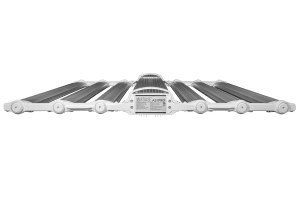

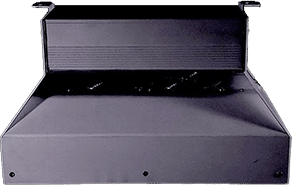

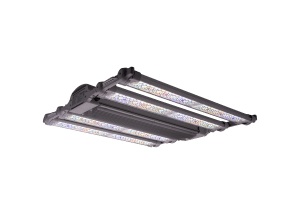


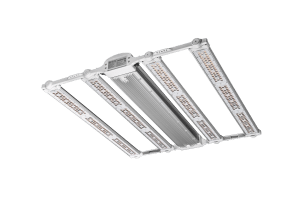
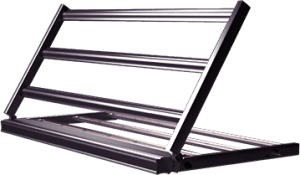
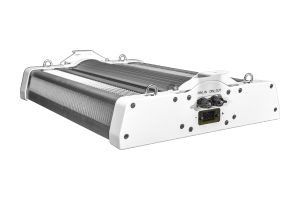


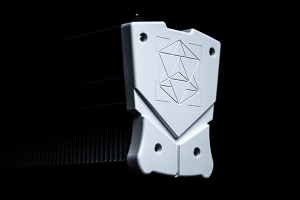

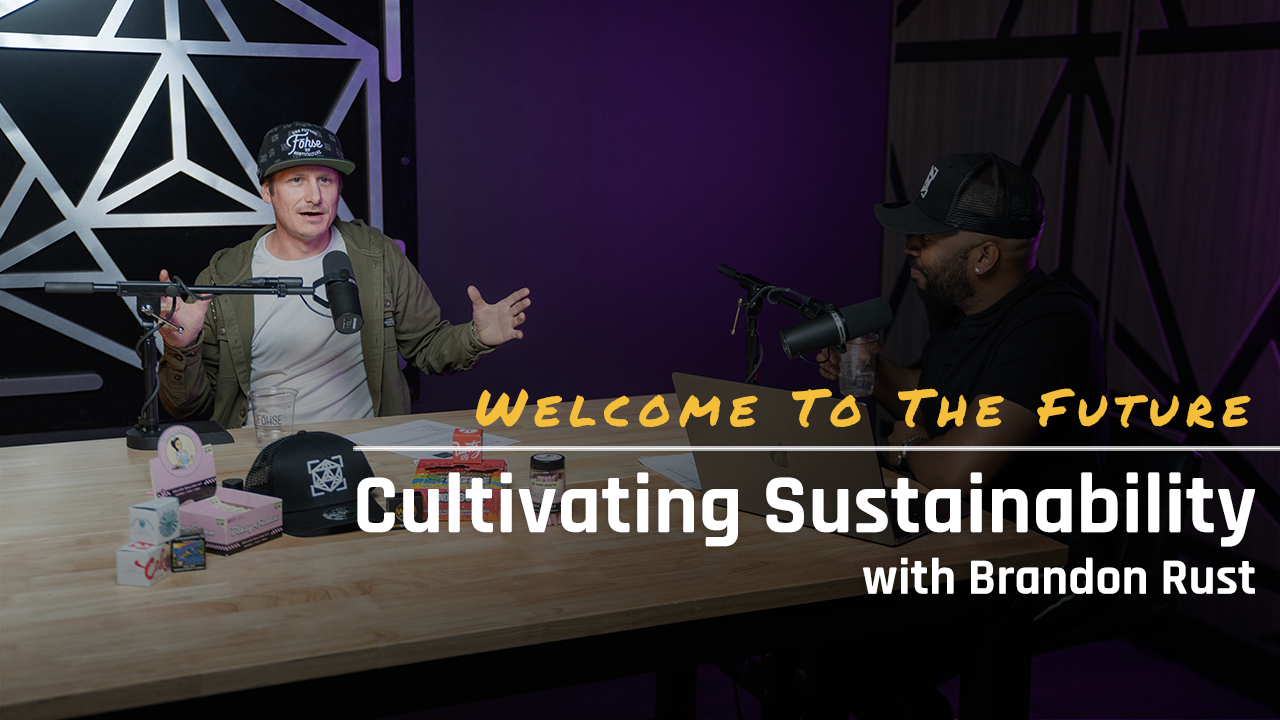
![134.5 grams/sq ft ? | Lume Cannabis Client [HIGH]LIGHT ?](https://resources.fohse.com/wp-content/uploads/2021/12/lumehighlight2021.webp)
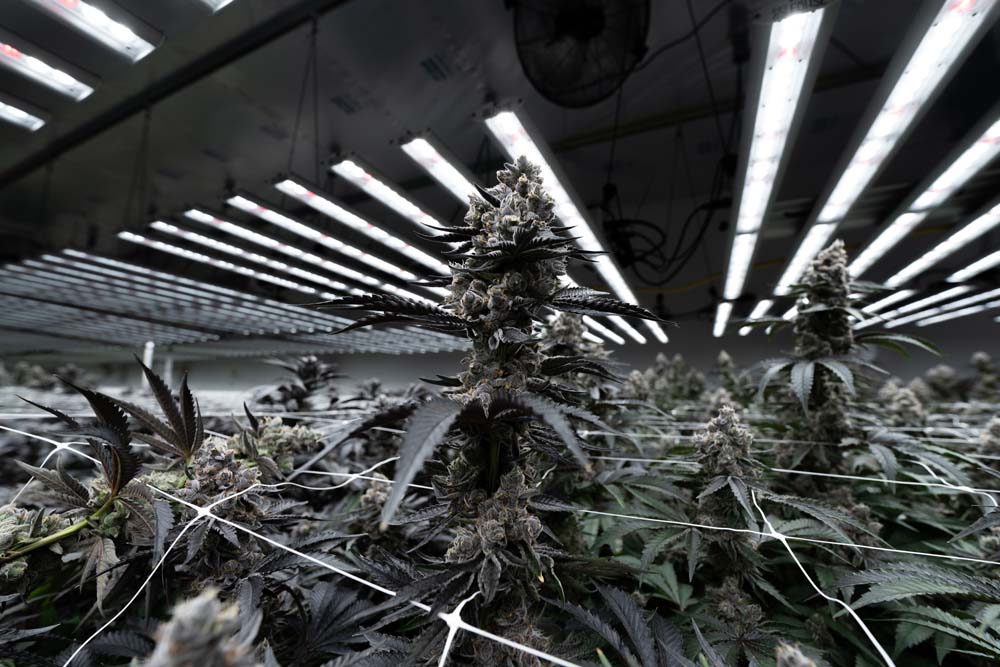
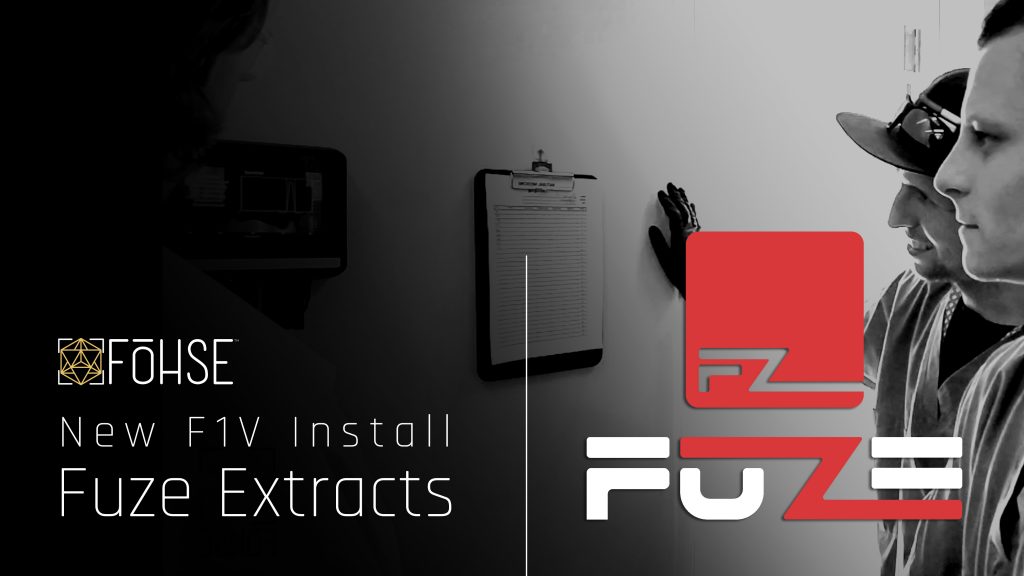
![Client [HIGH]💡 | TruInfusion | F1V](https://resources.fohse.com/wp-content/uploads/2023/10/Fohse-Tru-Infusion-19.jpg)
